Case studies 02 KOTOBUKI SEATING GROUP
Christian de Portzamparc
Nikken Sekkei
Jean Nouvel
Henning Larsen Arch.
Chiaki Arai
Perkins and Will
Arata Isozaki
Cesar Pelli
Moshe Safdie
Dominique Perrault
Shangyin Opera House
Cidade das Artes
Seijo Gakuen Sawayanagi Auditorium
Hokkaido University
Tokyo University of Science
Musée du Quai Branly
Harpa Concert Hall
Hachijo Town Government Hall
Niigata City Konan Ward Cultural Center
Princess Nora Bint Abdulrahman Uni.
Nara Centennial Hall
Philarmonics KLCC
Marina Bay Sans
Haute Cour de Justice
Christian de Portzamparc
Shangyin Opera House
Cidade das Artes
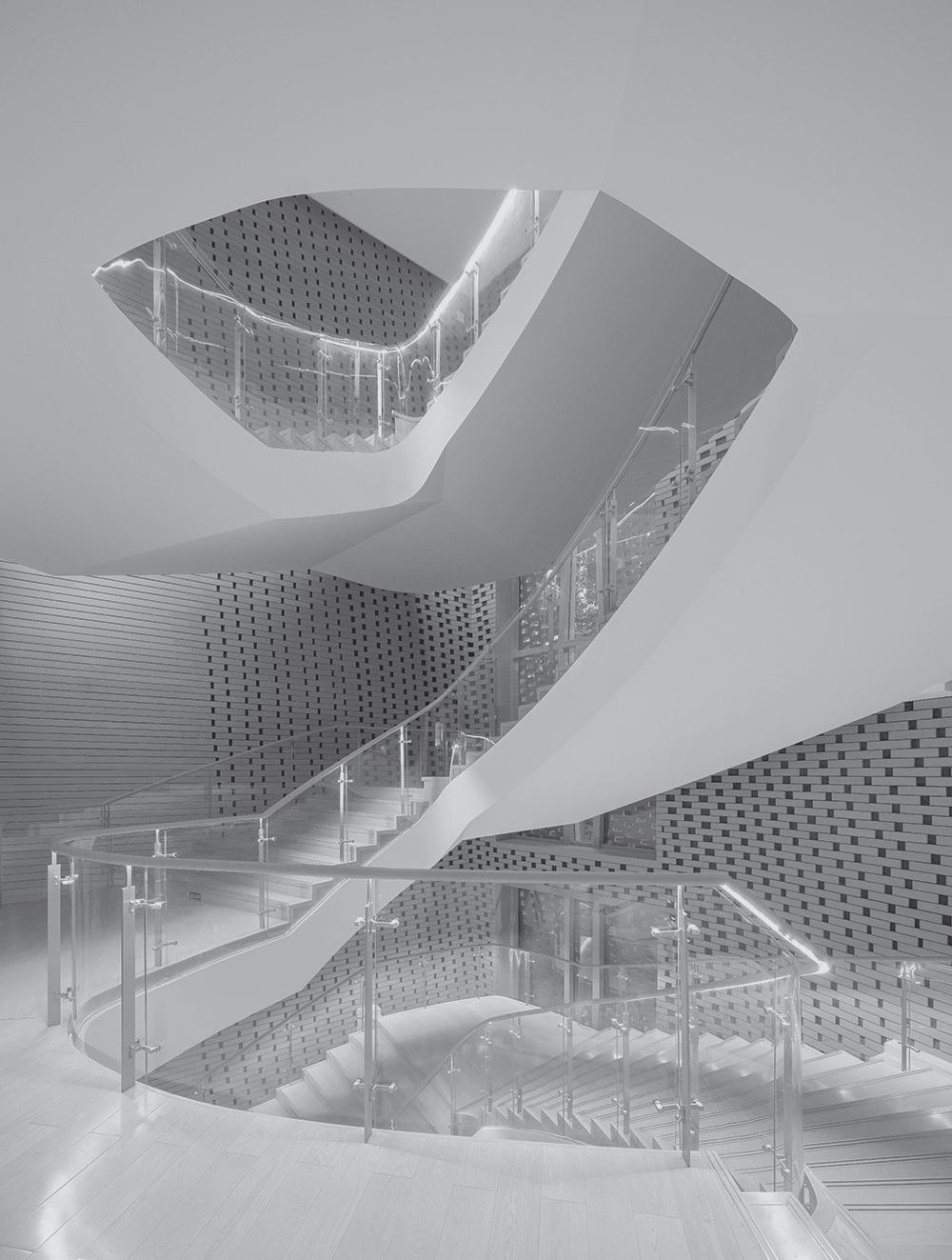
Christian de Portzamparc (born 5 May 1944) is a French architect and urbanist. He graduated from the École Nationale des Beaux Arts in Paris in 1970 and has since been noted for his bold designs and artistic touch; his projects reflect a sensibility to their environment and to urbanism that is a founding principle of his work. In 1994 he was awarded the Pritzker Prize.
Christian de Portzamparc (nacido el 5 de mayo de 1944) es un arquitecto y urbanista francés. Se graduó de la École Nationale des Beaux Arts de París en 1970 y desde entonces se ha destacado por sus diseños audaces y su toque artístico; sus proyectos reflejan una sensibilidad por su entorno y por el urbanismo que es un principio fundacional de su trabajo. En 1994 fue galardonado con el Premio Pritzker.
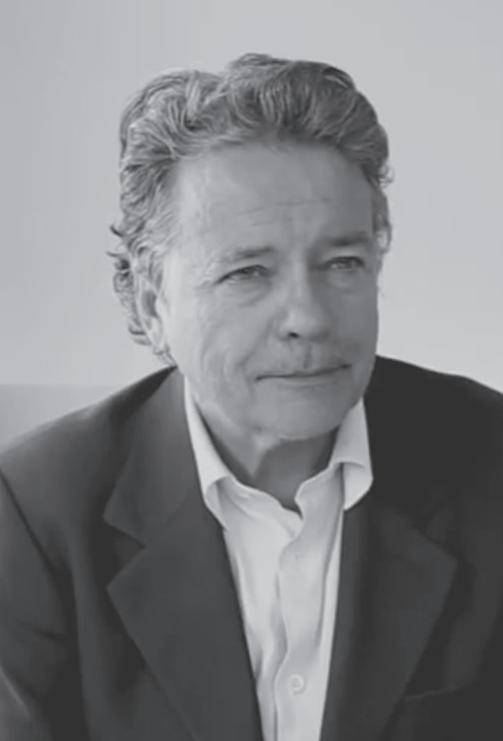
KOTOBUKI SEATING GROUP
Shangyin Opera House
This new opera house is located on Fenyang and Huaihai Road. The building has a great public entrance at the corner of these two important streets of the historical French district. Rather than a massive unique building the opera is built as a sequence of pavilions, following the rhythm and the height of the existing architecture including, on Fenyang road the existing recent building of the conservatory. The color and texture of the pavilions is respecting a brick pattern aspect.
The opera house belongs to the Conservatory of Shanghai. It provides to students and teachers a toll for practicing Opera in real condition. It is also conceived to be a high standard public hall for music, with a high level acoustical quality and international standards scenographic equipment.
The main hall contains 1,230 seats, provided by Quinette Gallay. The building provides all facilities as rehearsal and loges.
Este nuevo teatro de la ópera está situado en Fenyang y Huaihai Road. El edificio tiene una gran entrada pública en la esquina de estas dos importantes calles del histórico barrio francés. En lugar de un enorme edificio único, la ópera está construida como una secuencia de pabellones, siguiendo el ritmo y la altura de la arquitectura existente, incluyendo, en la calle Fenyang, el reciente edificio del conservatorio. El color y la textura de los pabellones respetan un aspecto de patrón de ladrillo.
El teatro de la ópera pertenece al Conservatorio de Shanghai. Proporciona a los estudiantes y profesores un peaje para practicar la ópera en condiciones reales. También está concebido como una sala pública de alto nivel para la música, con una calidad acústica de alto nivel y un equipamiento escenográfico de nivel internacional.
La sala principal contiene 1.230 asientos, proporcionados por Quinette Gallay. El edificio cuenta con todas las instalaciones de ensayo y salas.
2019 / Seats:1230
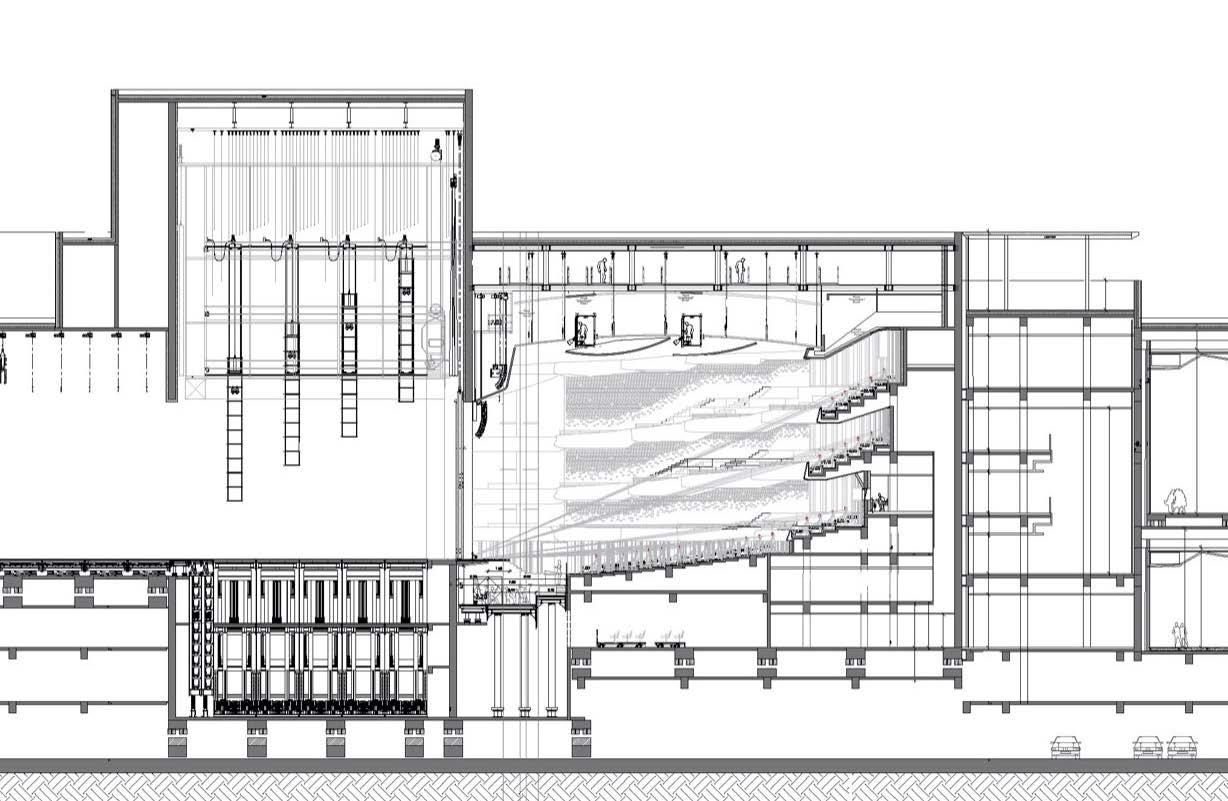

China


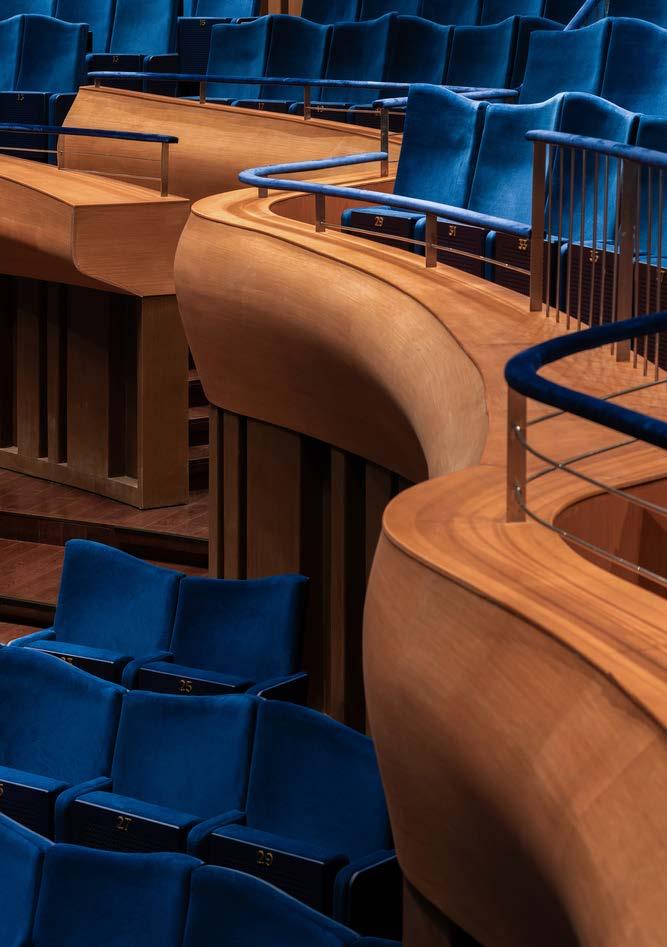
Cidade das Artes
The Cidade das Artes is situated between the sea and the mountains, at the center of fourteen kilometers of plain, on which a new and major district of Rio de Janeiro has been built – Barra da Tijuca. The landscape, deprived of strong urban landmarks and public spaces, is marked by a succession of closed spaces with residences and offices on one side of a straight expressway, which is lined on the other side by shopping centers.
The project is very much a public symbol, a new landmark in the greater Rio area, an urban signal, floating on the plain and highly visible.
The complex brings together a wide variety of spaces: a concert hall, which is unique anywhere in the world because it can be converted into an opera house and a theatre, a performance space for chamber music and popular music, movie theatres, dance studios, numerous rehearsal rooms, exhibition spaces, restaurants, and a media library.
La Cidade das Artes está situada entre el mar y la montaña, en el centro de catorce kilómetros de llanura, sobre la que se ha construido un nuevo e importante barrio de Río de Janeiro: Barra da Tijuca. El paisaje, desprovisto de fuertes hitos urbanos y espacios públicos, está marcado por una sucesión de espacios cerrados con residencias y oficinas a un lado de una autopista recta, que está bordeada al otro lado por centros comerciales.
El proyecto es un símbolo público, un nuevo hito en la zona de Río, una señal urbana que flota en la llanura y es muy visible.
El complejo reúne una gran variedad de espacios: una sala de conciertos, única en el mundo porque puede convertirse en teatro y ópera, un espacio de actuación para música de cámara y música popular, salas de cine, estudios de danza, numerosas salas de ensayo, espacios de exposición, restaurantes y una mediateca.
2012 / Seats:2400 Brazil
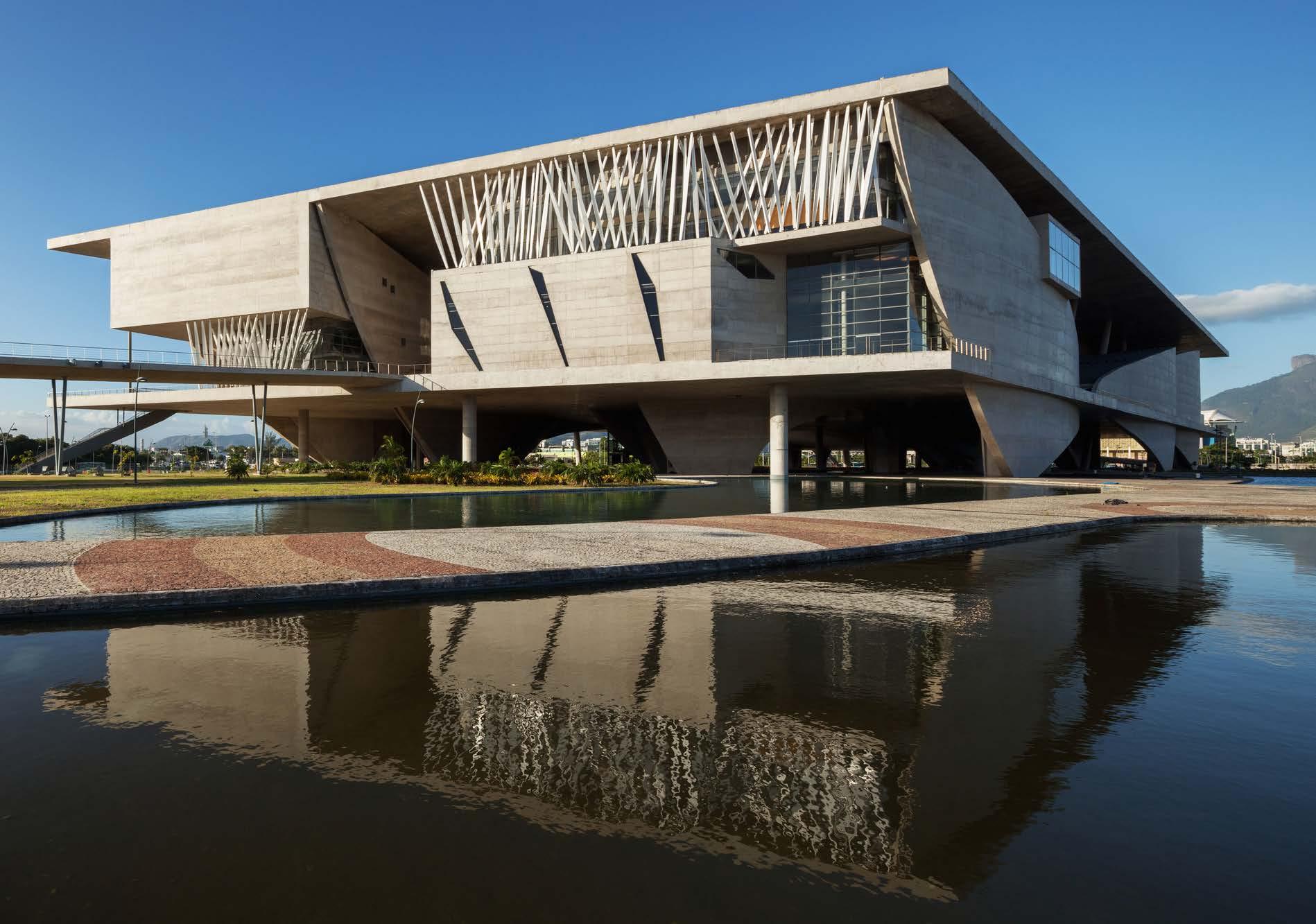

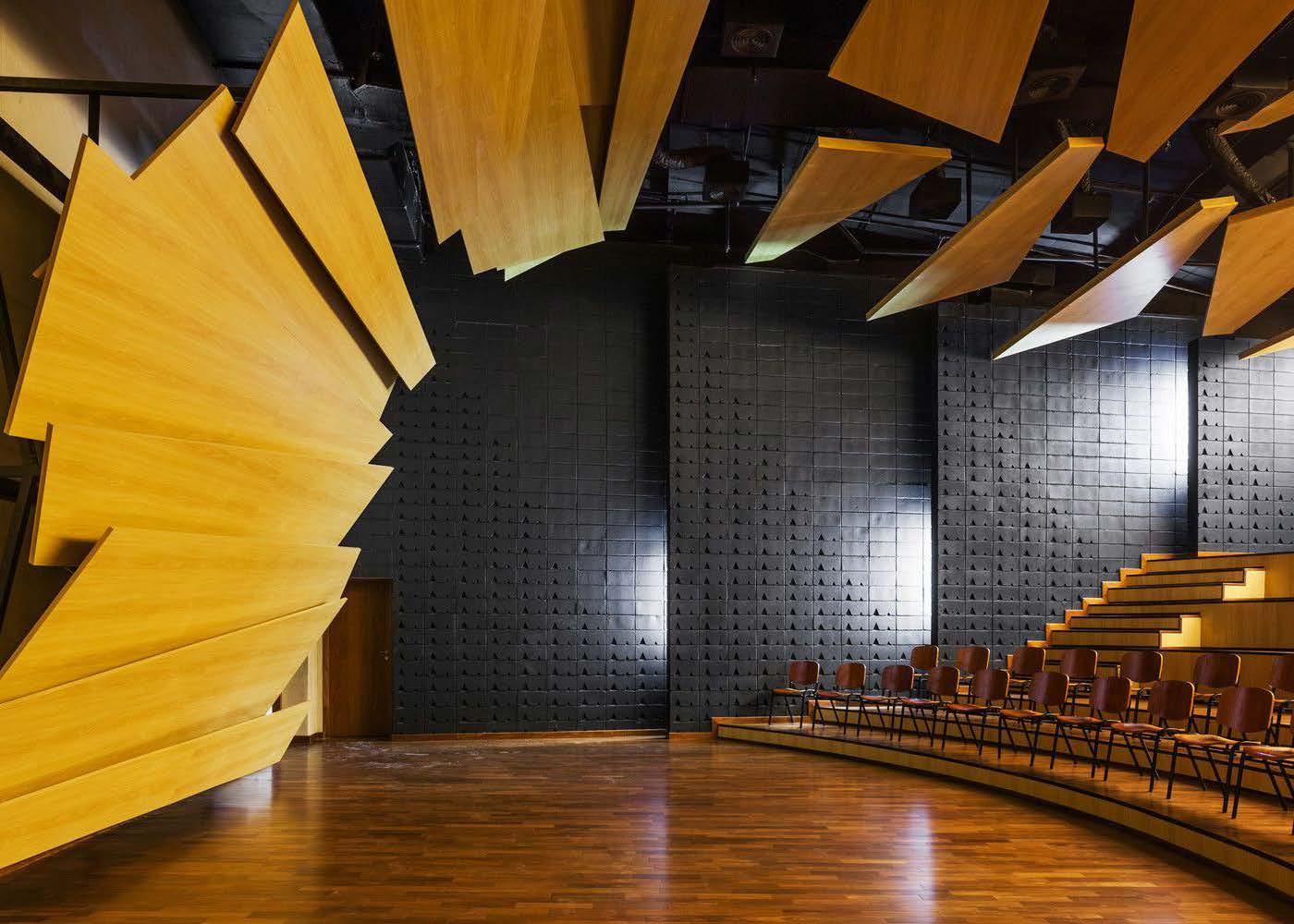
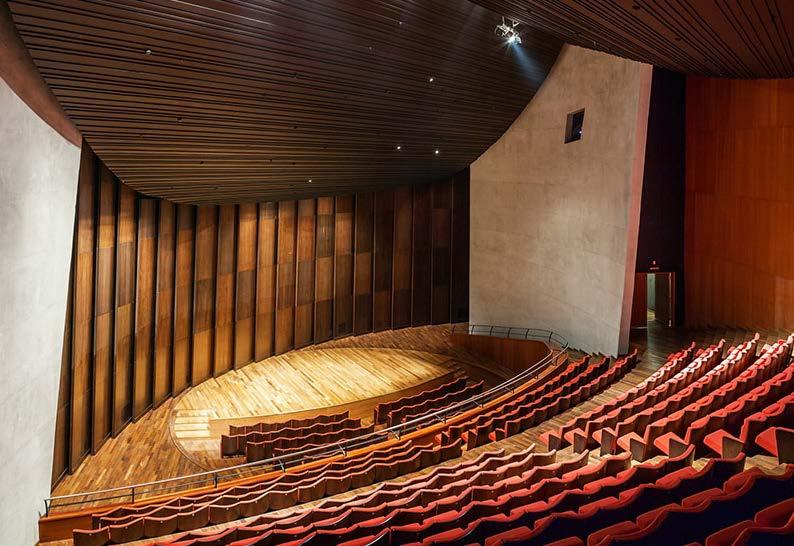
Nikken Sekkei
Seijo Gakuen Sawayanagi Auditorium
Hokkaido University
Tokyo University of Science

Nikken Sekkei is Japan’s leading architectural firm and the third largest architectural agency in the world. Founded in 1900, as Modernism was entering the realm of architectural thought, a small firm of 29 visionary architects, designers and engineers were commissioned to build a new library in Osaka. Today it has nearly 2,000 employees and has been involved in projects in more than fifty countries, mainly in Asia.
Nikken Sekkei , es la compañía más importante de arquitectura de Japón y es la tercera agencia de arquitectura más grande del mundo. Fundada en el año 1900, mientras el Modernismo entraba en el terreno del pensamiento arquitectónico, una pequeña empresa de 29 arquitectos, diseñadores e ingenieros visionarios fueron los encargados de construir una nueva biblioteca en Osaka. Actualmente tiene cerca de 2000 empleados y ha participado en proyectos en más de cincuenta países, principalmente en Asia.

KOTOBUKI SEATING GROUP
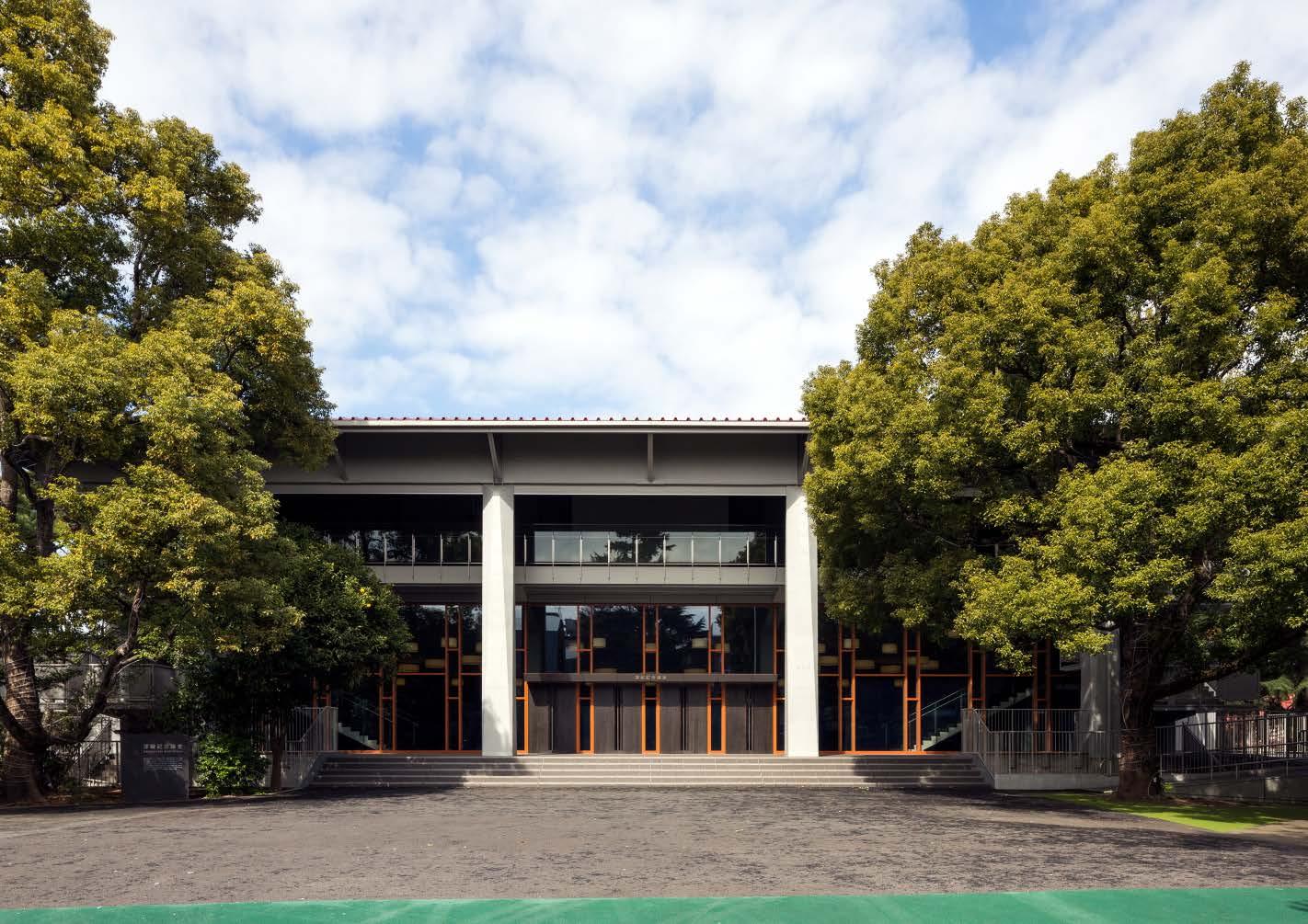
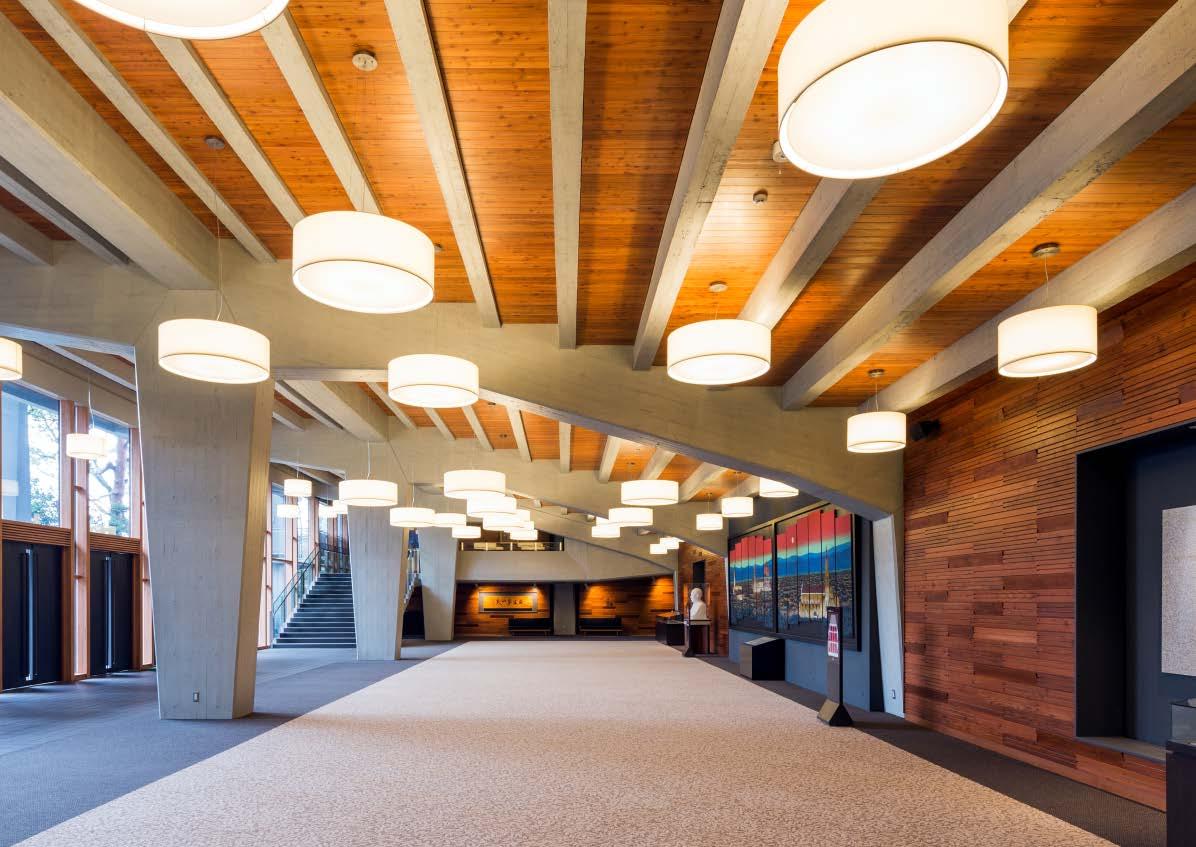
Originally constructed in 1928 as the “Mother’s Hall”, it reopened in 1967 as the “50th Anniversary Memorial Hall” then in 2015 it underwent a major renewal to celebrate the 150th anniversary of the founder, Seitaro Sawayanagi’s, birth and the 100th anniversary foundation, being reborn as the “Sawayanagi Auditorium”.
The interior makes extensive use of larch timber from Nagano Prefecture and new seats were fitted to accommodate approximately 1500 people, creating a full-scale auditorium that offers numerous opportunities for students to come into contact with the arts.
Construido originalmente en 1928 como “Sala de la Madre”, se reabrió en 1967 como “Sala Conmemorativa del 50º Aniversario” y luego, en 2015, se sometió a una importante renovación para celebrar el 150º aniversario del nacimiento del fundador, Seitaro Sawayanagi, y el 100º aniversario de la fundación, renaciendo como “Auditorio Sawayanagi”.
2015 /
Seats: 1570
En el interior se utilizó abundante madera de alerce de la prefectura de Nagano y se instalaron nuevos asientos para acomodar a unas 1.500 personas, creando un auditorio a gran escala que ofrece numerosas oportunidades para que los estudiantes entren en contacto con las artes. Japan
Seijo Gakuen Sawayanagi Auditorium
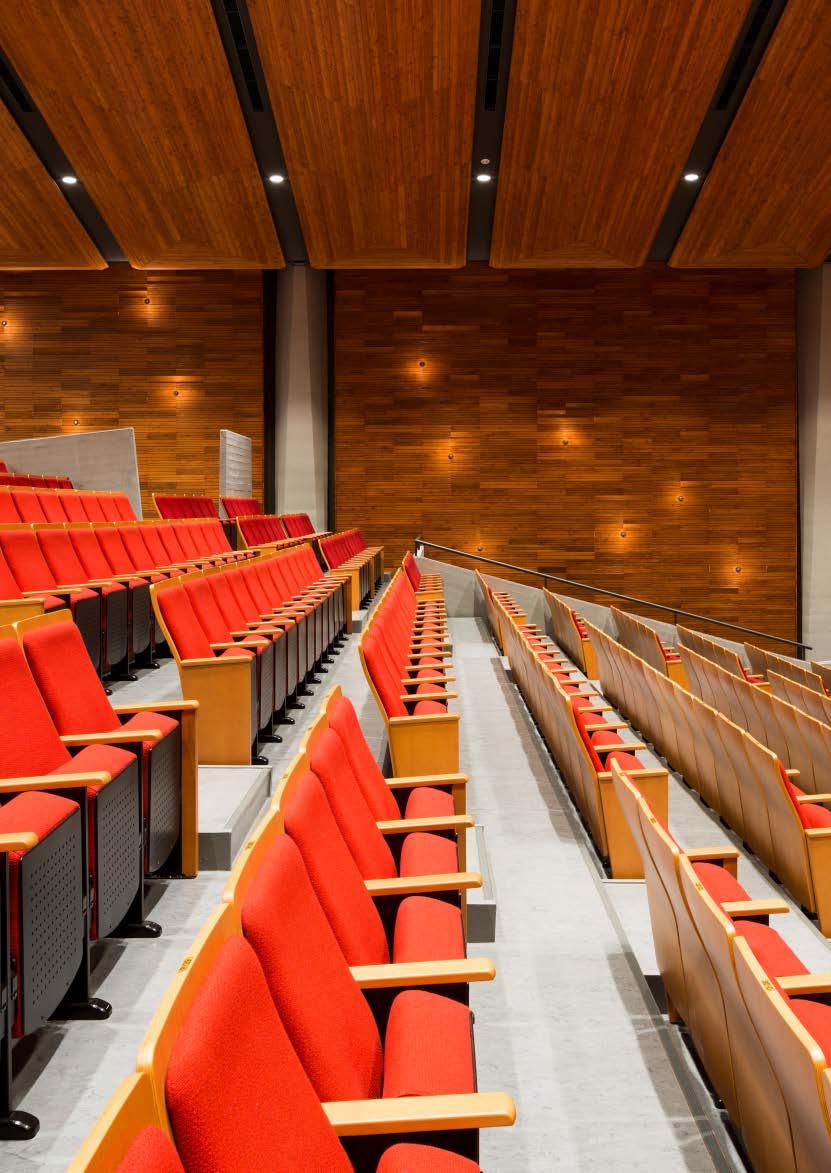

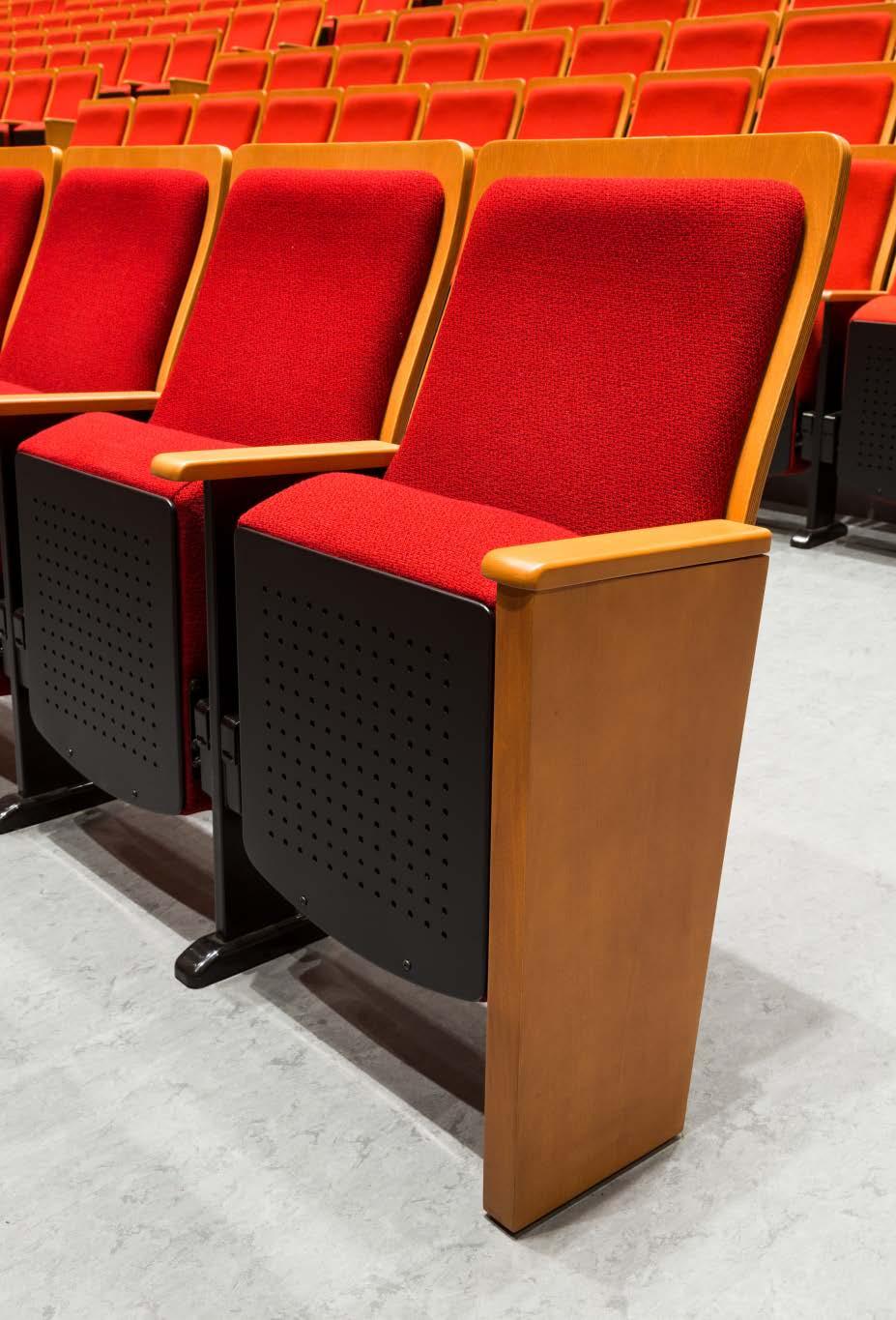

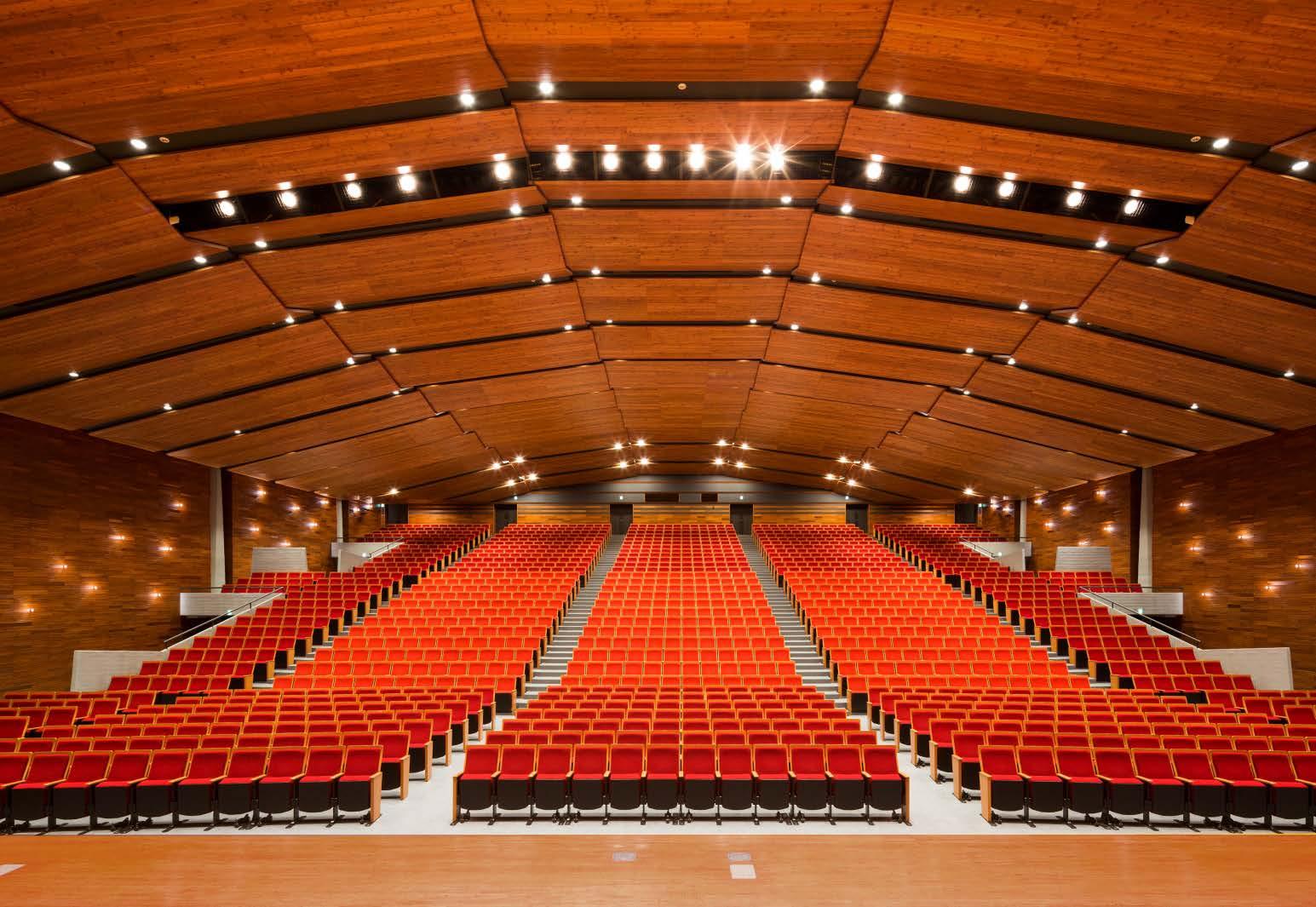


Hokkaido Bunkyo University
Hokkaido Bunkyo University or 北海道文教大学 - a private institution of higher education in Japan. Hokkaido Bunkyo University was established in 1999. The main building is located in Sapporo. Education at Hokkaido Bunkyo University regularly receives high expert ratings despite being one of the youngest universities in Japan, it ranks high in international ratings.
The aim was to maximise the flexibility of the university’s lecture hall. For this reason, Kotobuki designed, engineered and installed a telescopic recessed platform. This telescopic platform allows for forward and backward movement as it is incorporated into the wall void. It was installed with retractable seats and the mechanism for folding the seats and also for folding and unfolding the stand was automated, reducing the efforts of the university staff to a minimum, as the mechanisms are activated and deactivated with a single control. In this way, in just a few minutes, the room is completely unobstructed for use as a gymnasium or performance space.
La Universidad de Hokkaido Bunkyo o 北海道文教大学 - institución privada de educación superior en Japón. La Universidad de Hokkaido Bunkyo se creó en 1999. El edificio principal se encuentra en Sapporo. La educación en la Universidad Hokkaido Bunkyo recibe regularmente altas calificaciones de expertos a pesar de ser una de las universidades más jóvenes de Japón, ocupa un lugar destacado en las calificaciones internacionales.
Se quiso maximizar la flexibilidad de la sala de actos de la Universidad. Por esa razón, Kotobuki proyectó, diseño e instaló una grada telescópica del tipo “recessed”. Esta grada permite el movimiento hacia delante y hacia atrás, ya que queda icorporada en el hueco del muro. Se instaló con butacas retráctiles y se automatizó el mecanismo de abatimiento de las butacas y también el plegado y desplegado de la grada, reduciendo al máximo los esfuerzos del personal de la universidad, ya que con tan solo un mando se activan y desactivan los mecanismos. De este modo, en tan solo unos pocos minutos, la sala queda completamente libre de obstáculos para usarla como gimnasio o espacio de actuación.
2015 / Seats: 192 Japan
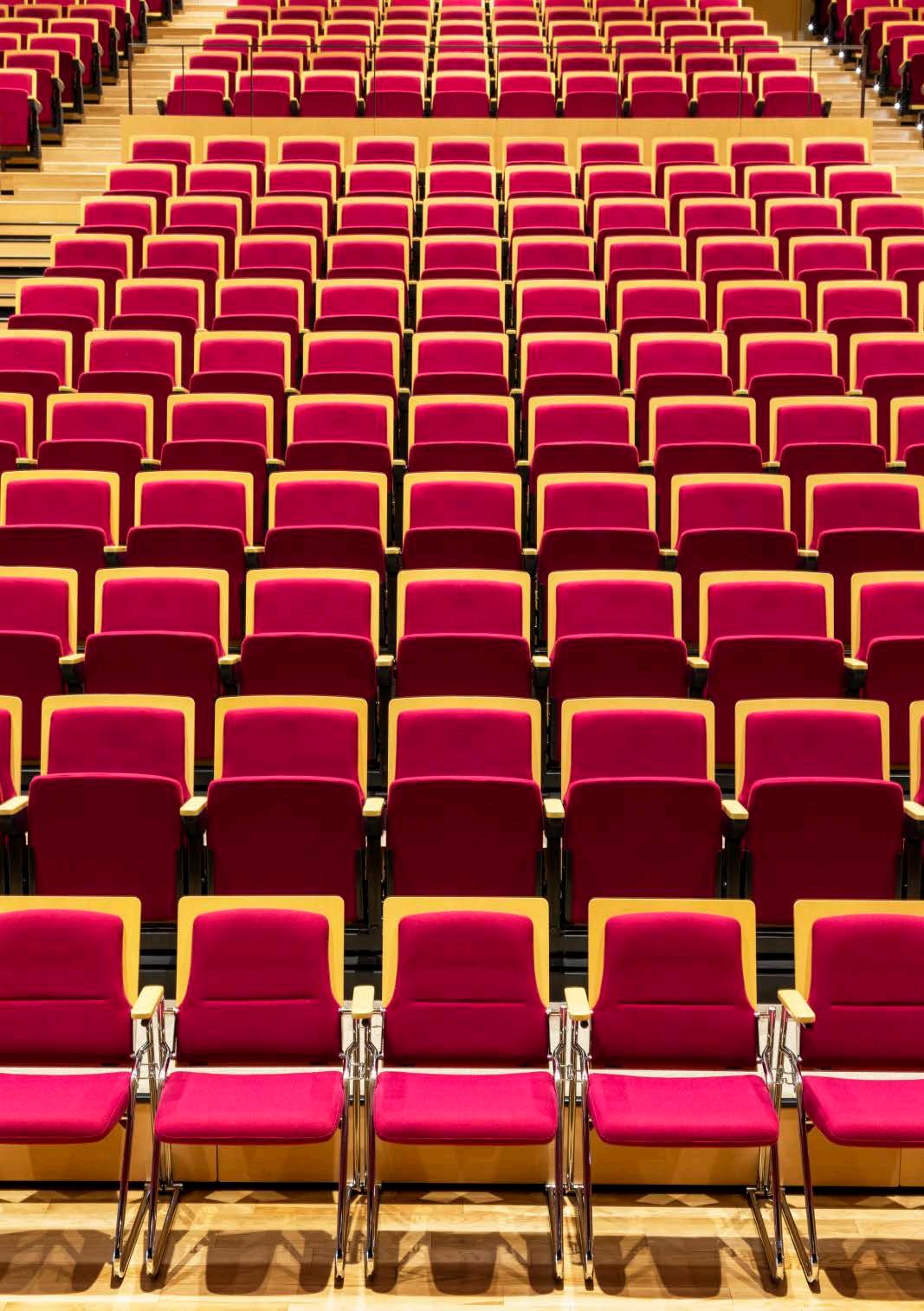

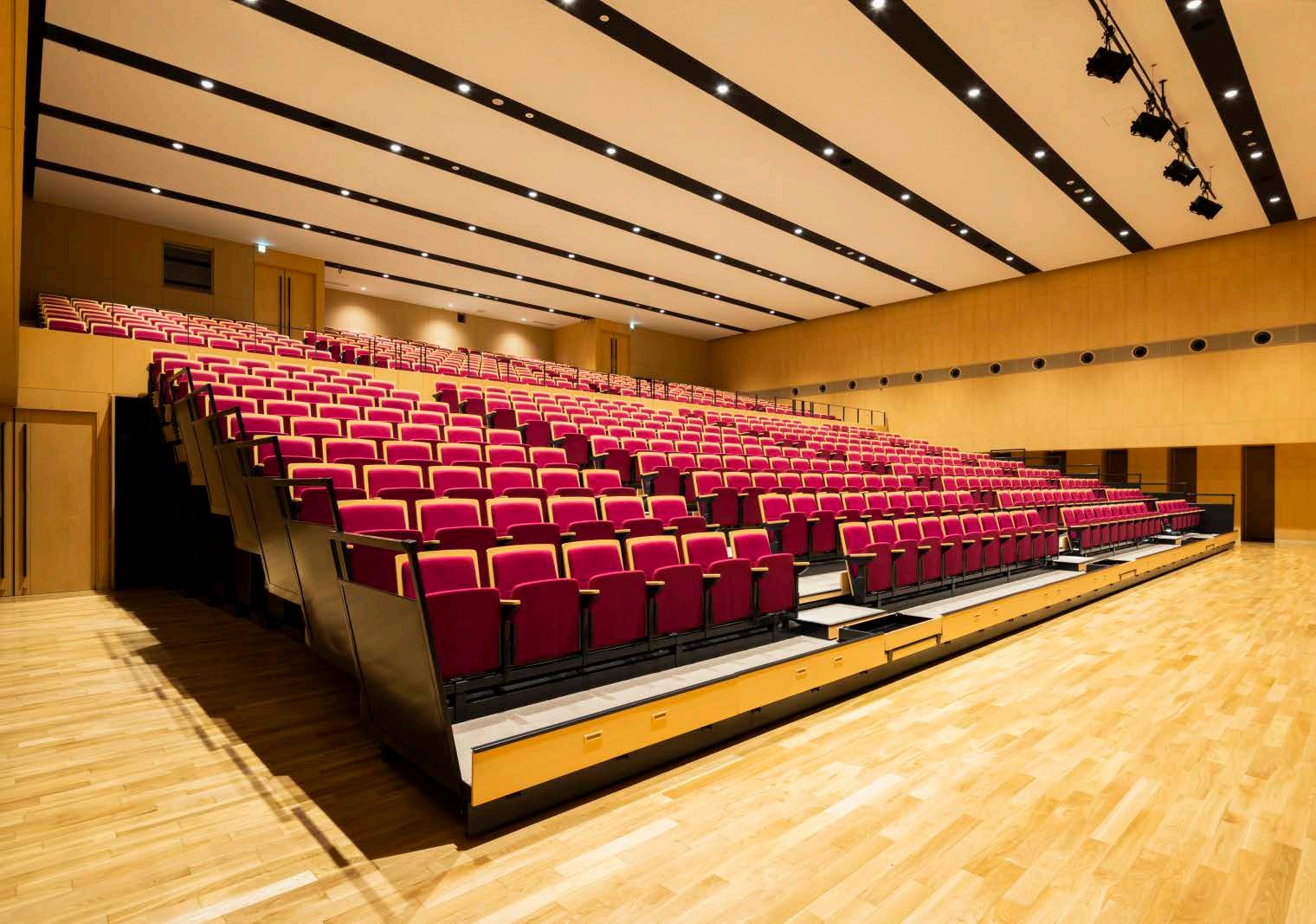


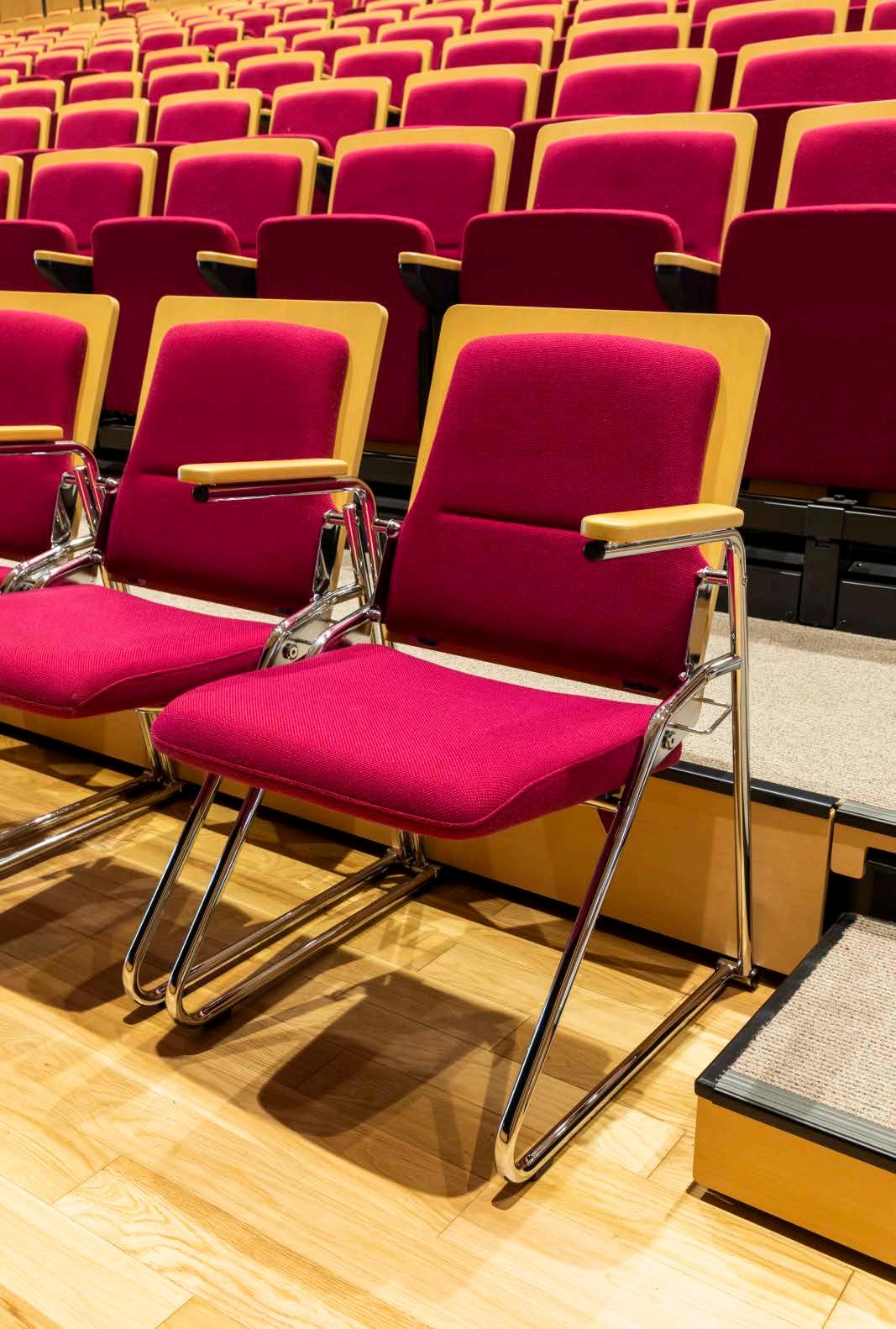

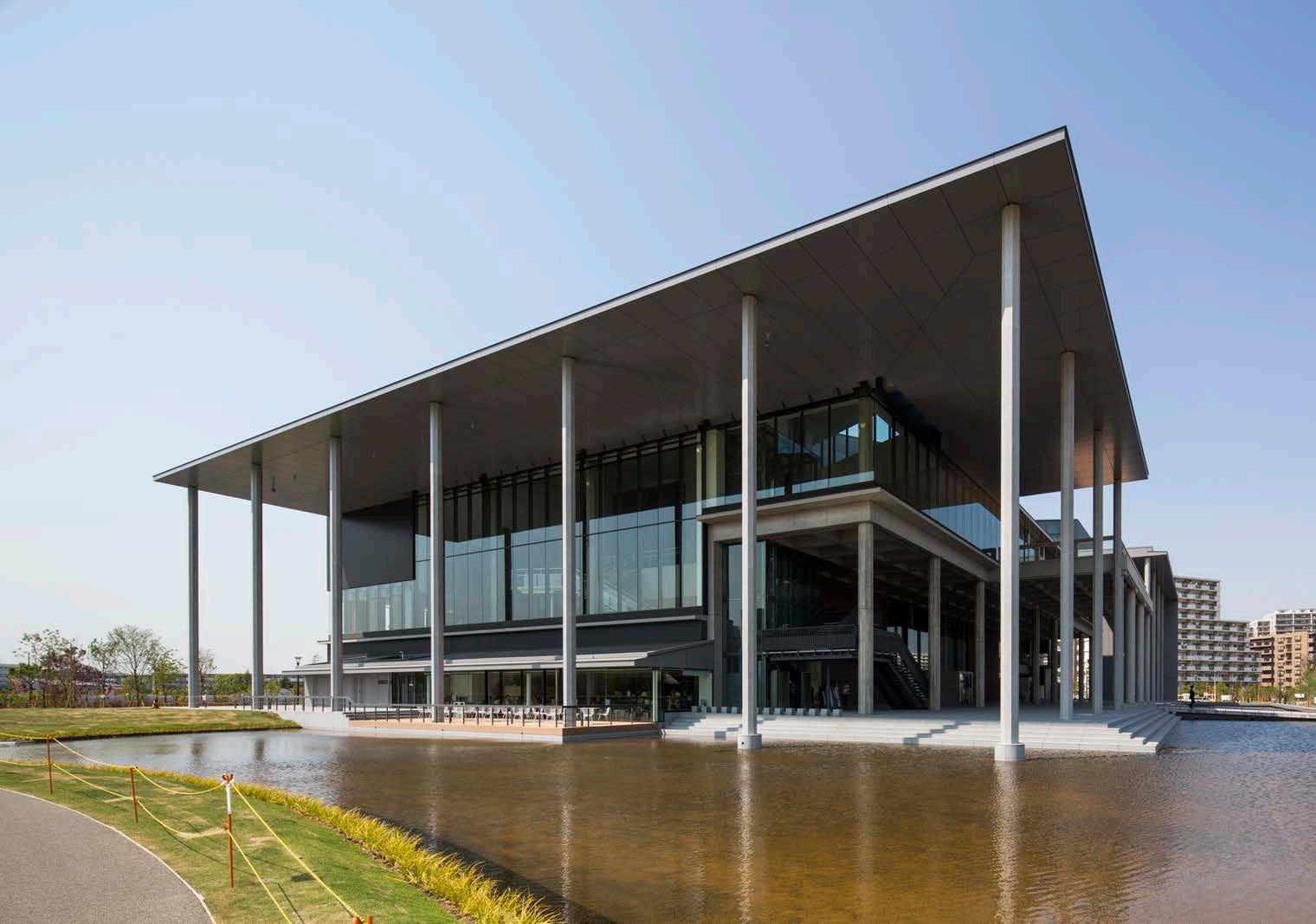

Tokyo University of Science
In 2013 the combined efforts of numerous engineering researchers resulted in the opening of the Katsushika Campus as a center for multidisciplinary research. The library, with its annex containing a large hall capable of 600 seats, can be described ad the heart of the university.
With a ceiling height of 5m, it consists of the 1st floor and 2 intermediate floors laid out in an “L” shape. It is roughly divided into silent zone and discussion zone, joined together by an atrium.
The Media Lounge located on the 1st floor has a tiered floor, known as the “Book Gallery”, and contains books on science and technology that become increasingly specialist the higher they are placed. It is open to the inhabitants of Katsushika Ward for academic purposes and together with the Katsushika Ward Science Education Center next door, it serves as a local venue for information exchange.
En 2013, los esfuerzos combinados de numerosos investigadores de ingeniería dieron como resultado la apertura del Campus Katsushika como centro de investigación multidisciplinar. La biblioteca, con su anexo que contiene una gran sala con capacidad para 600 asientos, puede describirse como el corazón de la universidad.
Con una altura de 5 metros, consta de una primera planta y dos plantas intermedias dispuestas en forma de “L”. Está dividida, a grandes rasgos, en zona de silencio y zona de debate, unidas por un atrio.
La Sala de Prensa, situada en la 1ª planta, tiene un piso escalonado, conocido como “Galería de Libros”, y contiene libros de ciencia y tecnología que se vuelven cada vez más especializados cuanto más alto se colocan. Está abierta a los habitantes del barrio de Katsushika para fines académicos y, junto con el Centro de Educación Científica del barrio de Katsushika, situado al lado, sirve como lugar de intercambio de información local.

2013 / Seats: 600 Japan


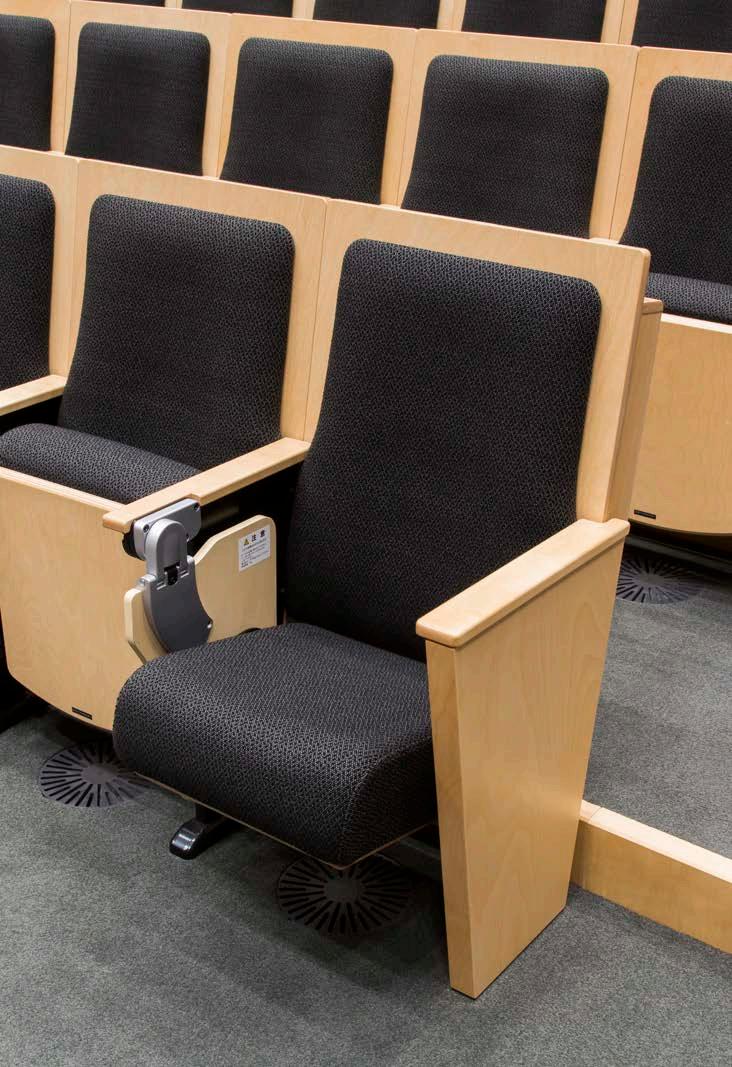


Jean Nouvel
Musée du Quai Branly
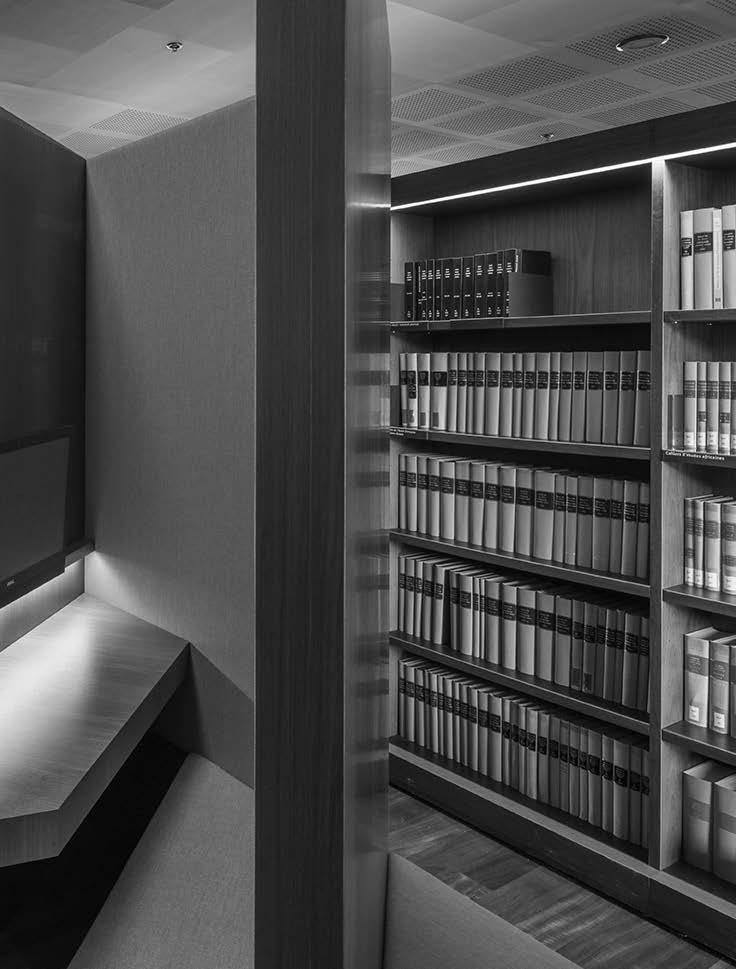
Jean Nouvel (born 12 August 1945) is a French architect. Nouvel studied at the École des Beaux-Arts in Paris and was a founding member of Mars 1976 and Syndicat de l’Architecture. He has obtained a number of prestigious distinctions over the course of his career, including the Aga Khan Award for Architecture (for the Institut du Monde Arabe which Nouvel designed), the Wolf Prize in Arts in 2005 and the Pritzker Prize in 2008.
Jean Nouvel (nacido el 12 de agosto de 1945) es un arquitecto francés. Nouvel estudió en la École des Beaux-Arts de París y fue miembro fundador de Mars 1976 y Syndicat de l’Architecture. Ha obtenido una serie de prestigiosas distinciones a lo largo de su carrera, incluido el Premio Aga Khan de Arquitectura (para el Institut du Monde Arabe que diseñó Nouvel), el Premio Wolf de las Artes en 2005 y el Premio Pritzker en 2008.

KOTOBUKI SEATING GROUP
Musée du Quai Branly
It is “a building perched on stilts, everything is curved, fluid, transparent, mysterious and, above all, warm”.
Firstly, the glass wall separating the Museum from the road running parallel to the river creates an attractive effect of “visible” privacy. Secondly, and in response to the requirements of the programme, it attempts to reduce the thermal load, at least in part of the complex on the north façade, with a garden façade that attracts the passer-by, adding an aesthetic and environmental contribution that gives a fresh touch to an area of traditional buildings.
Finally, it adds a space that is not normally open to the public for observation, the Museum’s “cellar” collection, usually hidden and in this case uncovered to the visitor’s eye as one walks along the access ramp, is seen through a central circular glazed space where the pieces that are not on display are stored.
Se trata de “un edificio encaramado sobre pilotes, todo es curvo, fluido, transparente, misterioso y sobre todo, cálido”.
En primer término, el muro de vidrio que separa al Museo de la vía paralela al río, consigue un efecto de privacidad “visible”, atractivo. En segundo término, y respondiendo a los requisitos del programa, intenta disminuir la carga térmica, al menos en una parte del conjunto sobre la fachada norte, con una fachada-jardín que atrae al caminante, agregando un aporte estético y ambiental que otorga un toque fresco a una zona de edificios tradicionales.
Por último, agrega un espacio que normalmente no es abierto al público para su observación, la colección “de bodega” del Museo, generalmente escondida y en este caso descubierta al ojo del visitante a medida que se avanza por la rampa de acceso, se aprecia a través de un espacio circular central y acristalado donde se almacenan las piezas no expuestas.
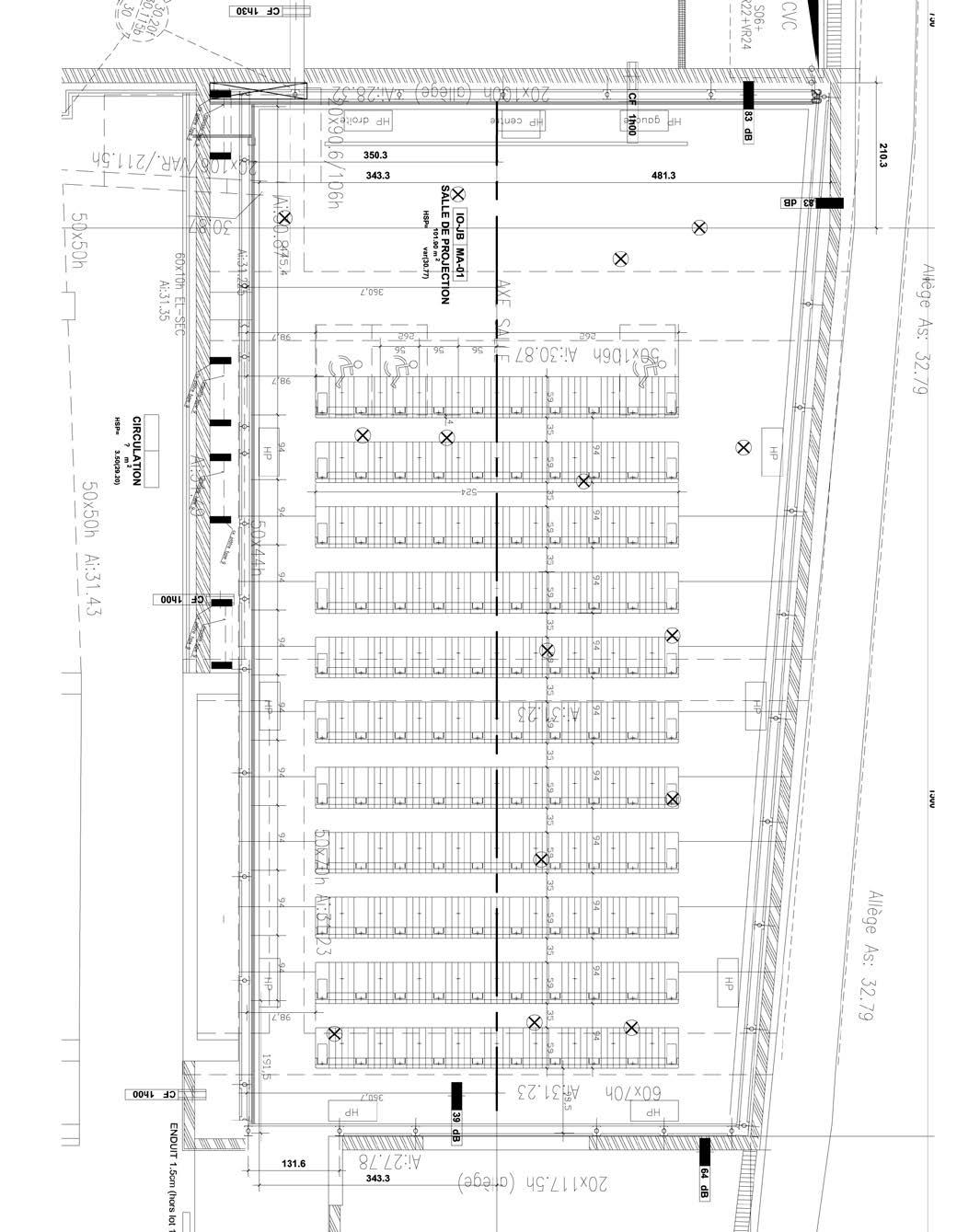


2006 / Seats:1.120
Paris, France
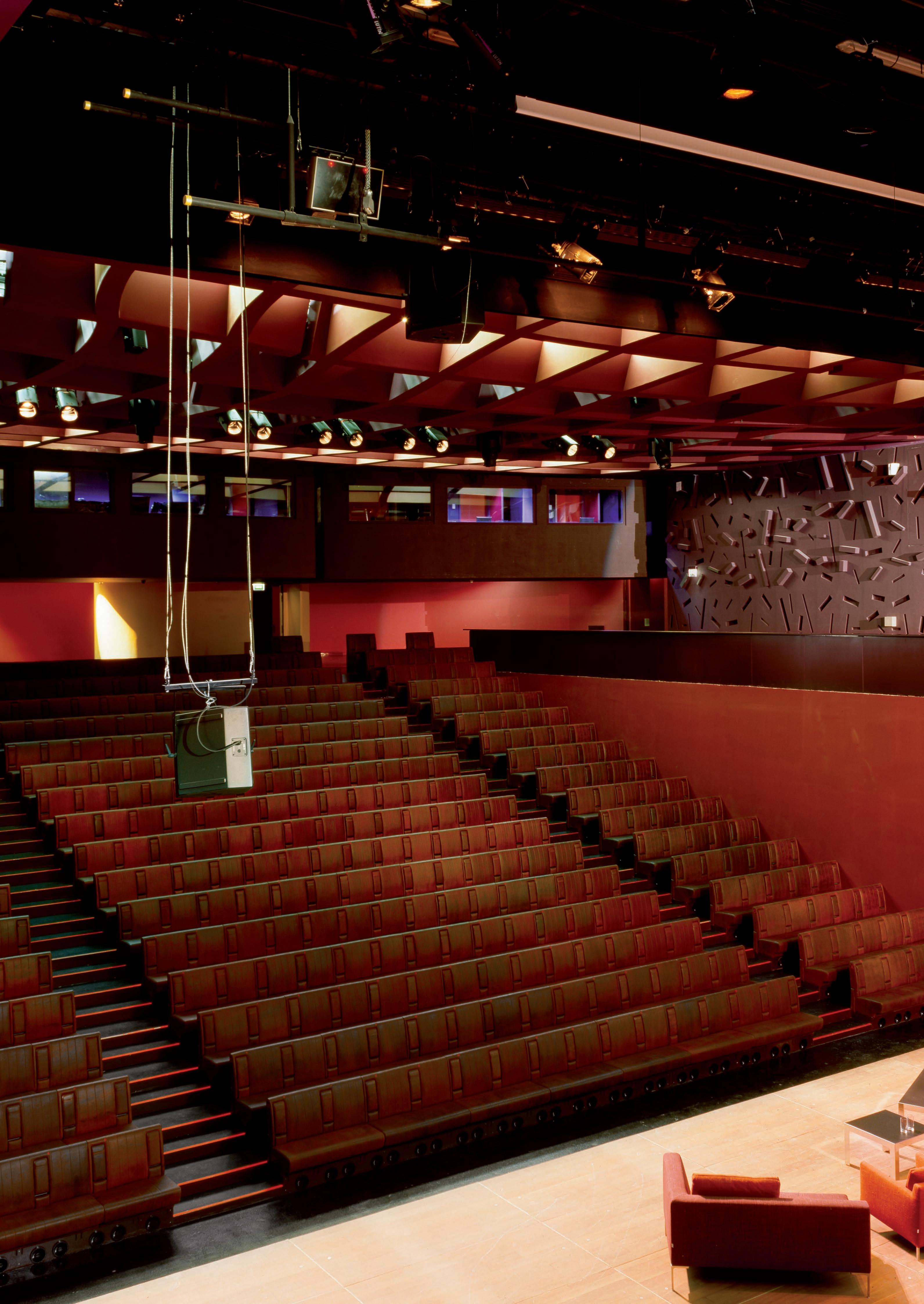
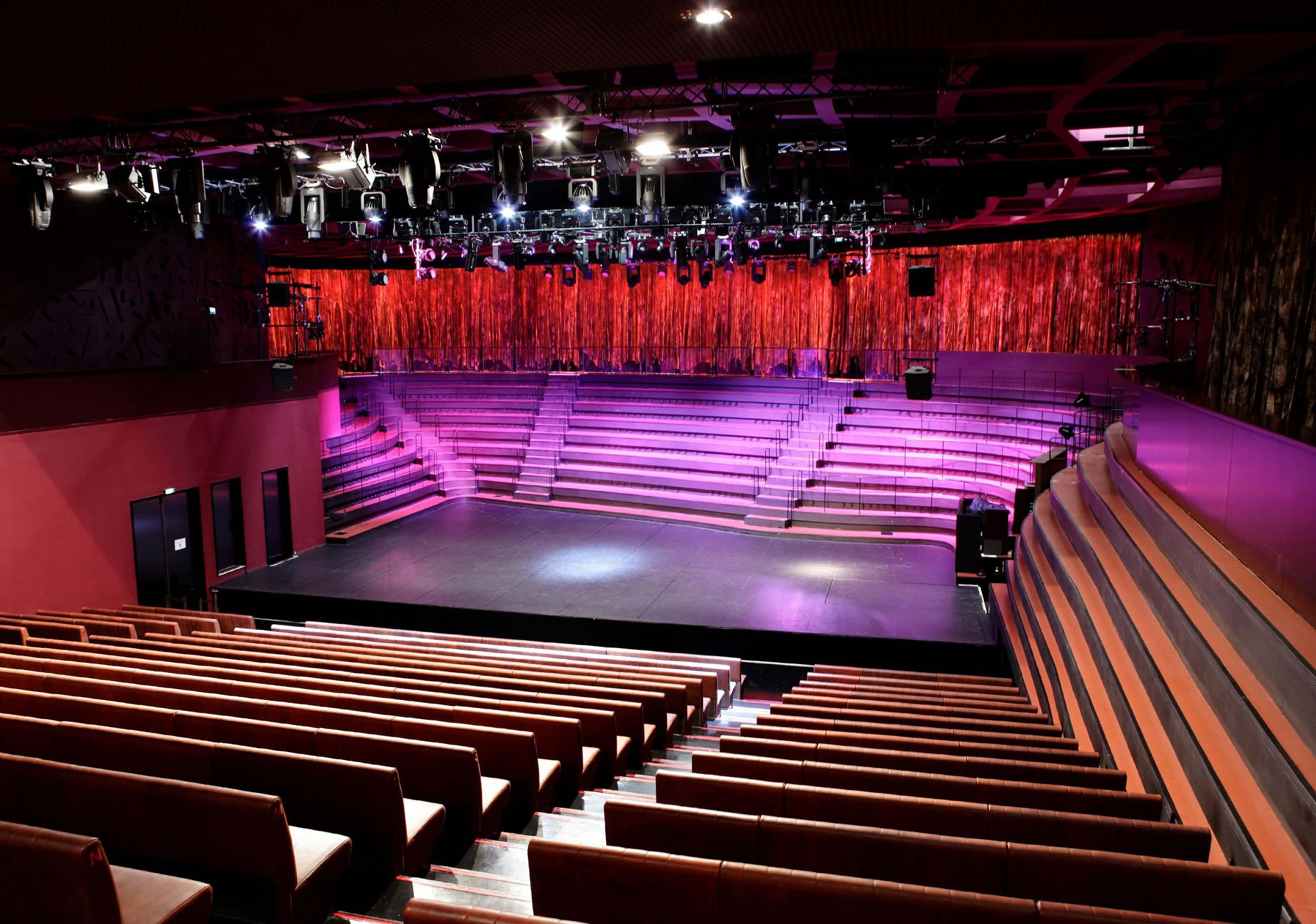


Henning Larsen Architects
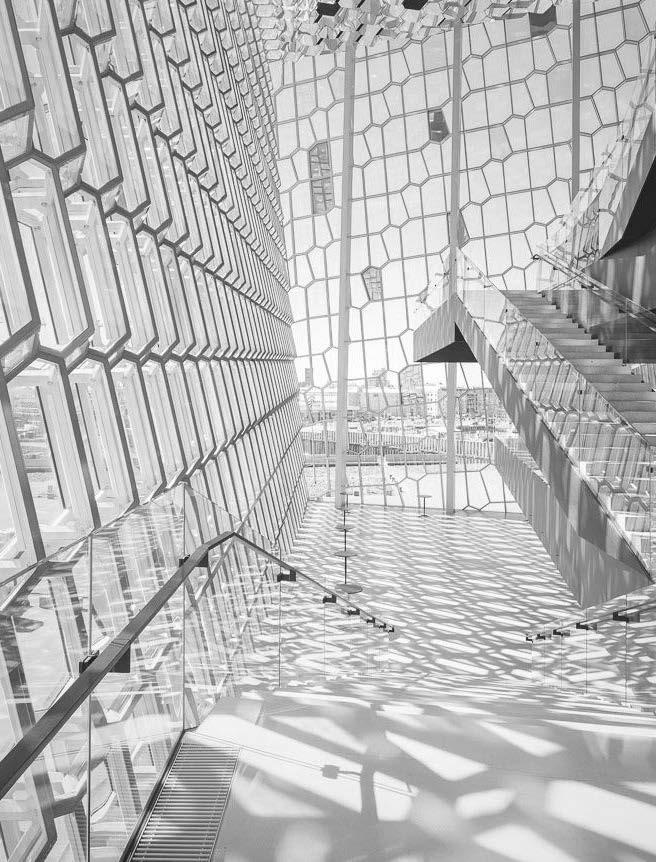
Henning Larsen Architects is an international architectural firm based in Copenhagen, Denmark. Founded in 1959 by Henning Larsen, it has around 750 employees. In 2008, it opened an office in Riyadh, Saudi Arabia and in 2011, an office in Munich, Germany were inaugurated. The company also have offices in New York USA, Oslo, Norway, in the Faroe Islands, and in Hong Kong, China. It is known for its cultural and educational projects.
Henning Larsen Architects es un estudio de arquitectura internacional con sede en Copenhague, Dinamarca. Fundada en 1959 por Henning Larsen, cuenta con alrededor de 750 empleados. En 2008, abrió una oficina en Riyadh, Arabia Saudita y en 2011, se inauguró una oficina en Munich, Alemania. La compañía también tiene oficinas en Nueva York, EE. UU., Oslo, Noruega, en las Islas Feroe y en Hong Kong, China. Es conocida por sus proyectos culturales y educativos.
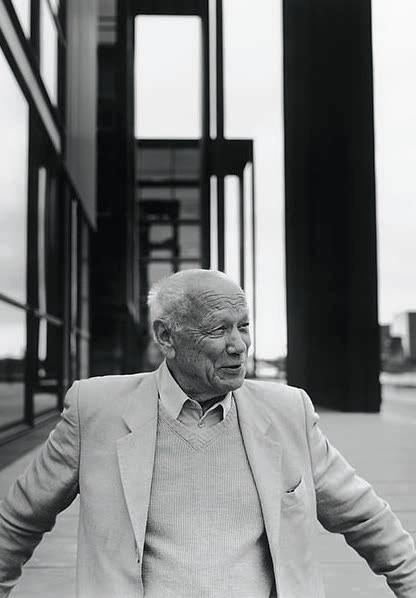
KOTOBUKI SEATING GROUP
Harpa Concert Hall


Harpa Concert Hall
With the aim of revitalising the eastern part of Reykjavik and creating a better connection to the city centre, the Harpa Concert Hall and Congress Centre is built on the border between land and sea.
The harbour extension project also includes a central square, a shopping street, a hotel, residential buildings, educational institutions, and mixed industry. The overall objective is to generate life in the area and to create a better connection between the city centre and the harbour.
The 28,000 m2 auditorium has four main halls suitable for concerts and conferences. The main hall, Eldborg, with seating by Quinette Gallay, seats 16001800 people.
Con el objetivo de revitalizar la zona este de Reykjavik y crear una mejor conexión con el centro de la ciudad, el Auditorio y Centro de Congresos Harpa surge en la frontera entre la tierra y el mar.
El proyecto de ampliación del puerto comprende también una plaza central, una calle comercial, un hotel, edificios de viviendas, instituciones educativas y para la industria mixta. El objetivo general es generar vida en la zona y crear una mejor conexión entre el centro de la ciudad y del puerto.
Los 28.000 m2 del auditorio cuentan con cuatro salas principales aptas para conciertos y conferencias. La sala principal, Eldborg, con butacas de Quinette Gallay, tiene capacidad para 1600 -1800 personas.
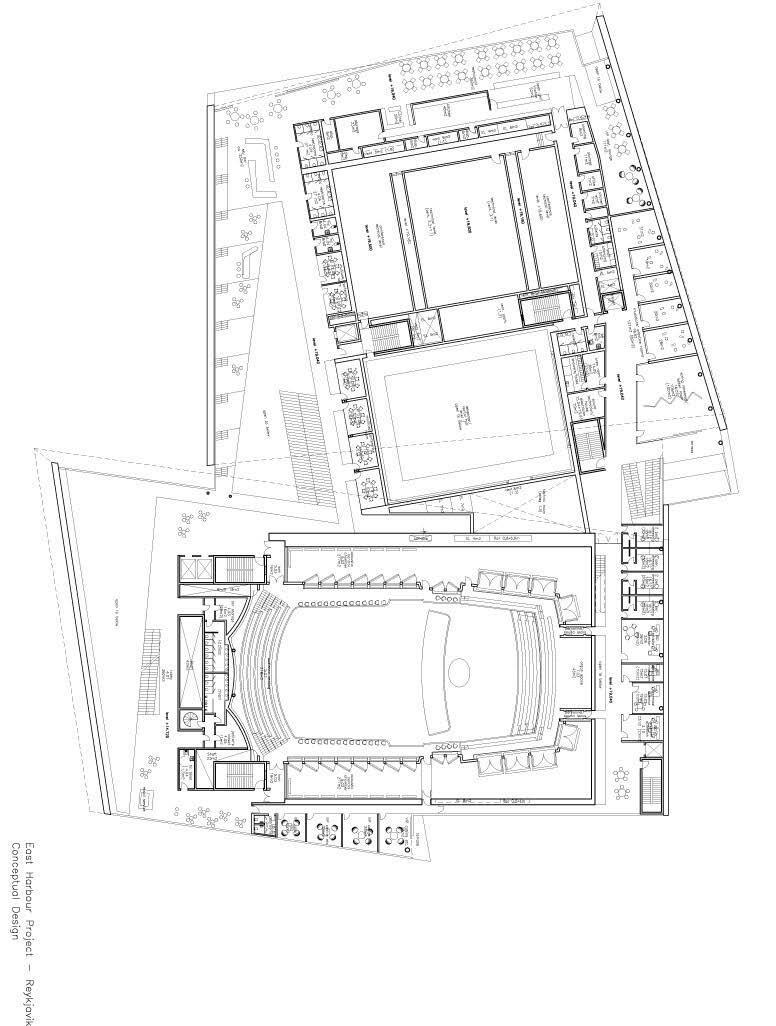
2011 / Seats: 840 Iceland
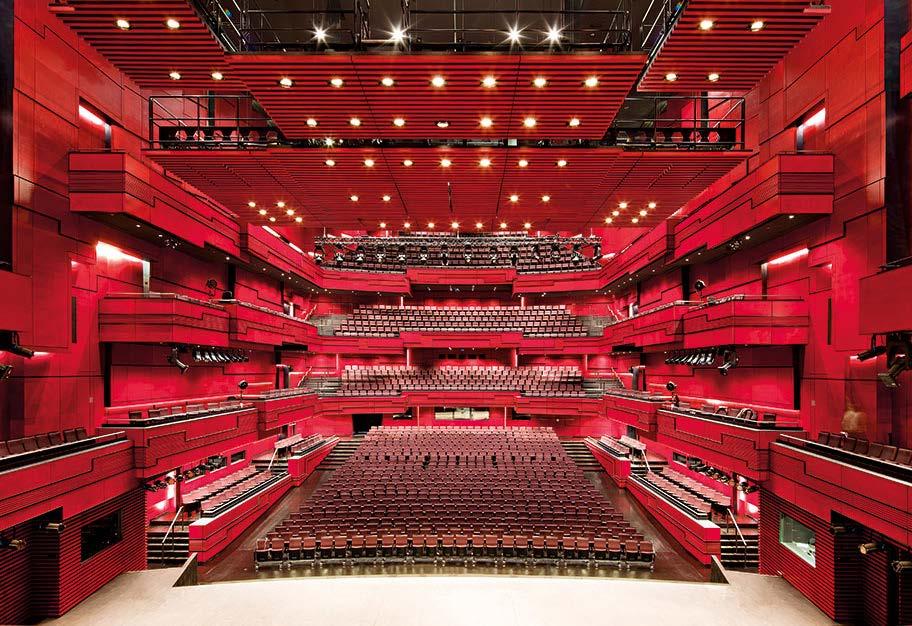
Chiaki Arai
Hachijo Town Government Hall
Niigata City Konan Ward Cultural Center

Chiaki Arai was born in 1948 in Shimane, Japan. He studied architecture at the Musashi Institute of Technology (Tokyo City University) and the University of Pennsylvania, Greater London Council. He established Chiaki Arai Urban & Architecture Design in 1980 for urban planning, urban design, architectural design, landscape design, interior design and research. He has received numerous national and international awards, including the AIJ Award twice in 1996 and 2002, the ARCASIA Award Gold Medal in 1998, and the 2009 JIA Grand Prize.
Chiaki Arai nació en 1948 en Shimane, Japón y estudió arquitectura en el Musashi Institute of Technology (Tokyo City University) y la Universidad de Pennsylvania, Greater London Council. Estableció Chiaki Arai Urban & Architecture Design en 1980 para planificación urbana, diseño urbano, diseño arquitectónico, diseño paisajístico, diseño de interiores e investigación. Ha recibido numerosos premios nacionales e internacionales, incluido el premio AIJ en dos ocasiones en 1996 y 2002, la medalla de oro del premio ARCASIA en 1998 y el Gran Premio JIA 2009.

KOTOBUKI SEATING GROUP
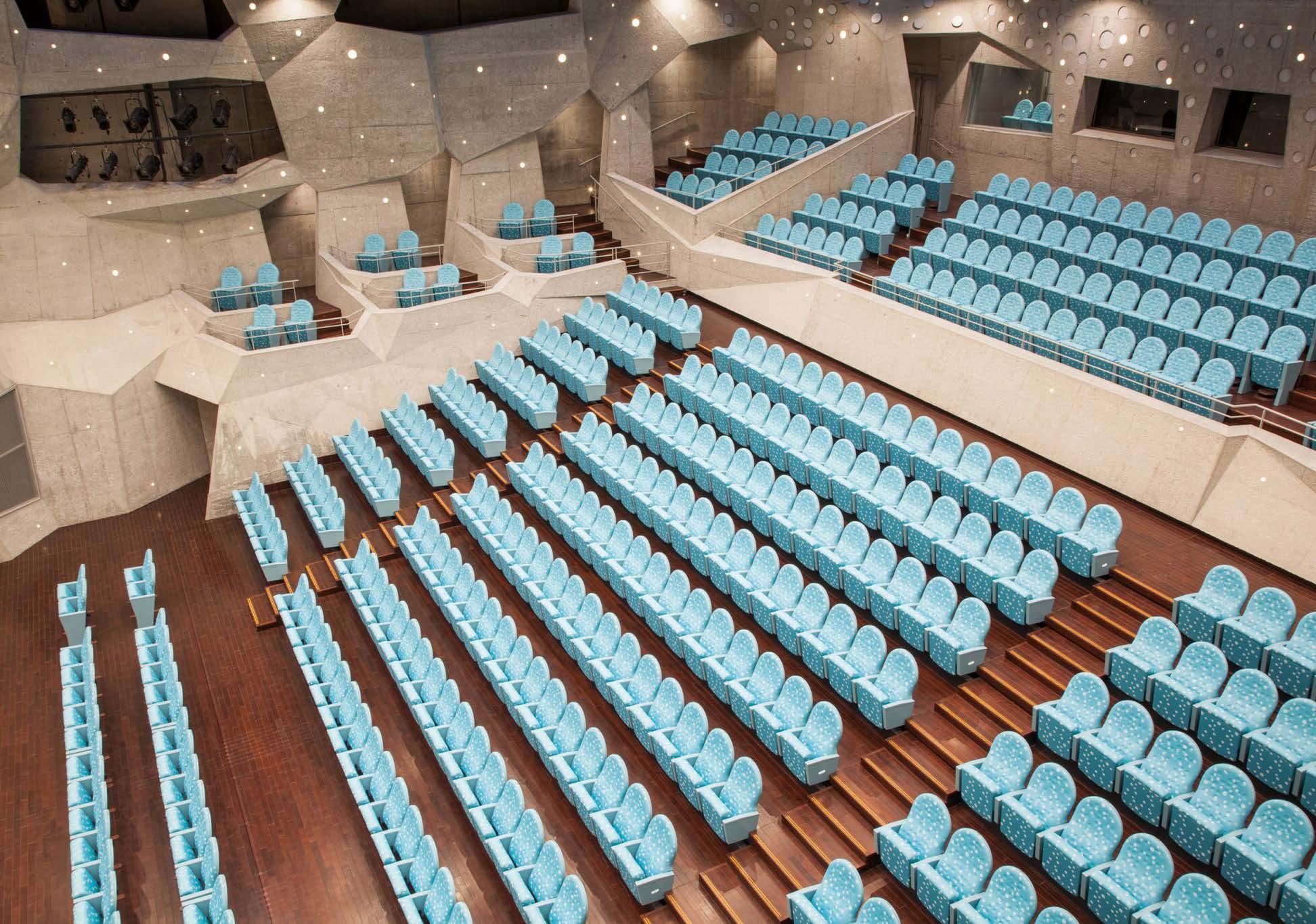

Hachijo Town Government Hall
The town hall offices in the Tokyo town of Hachijo, on the island of Hachijo-jima, opened their doors on 7 May 2013. The new building, which replaces the old town hall that had served the community for 50 years, was designed to be earthquake-resistant and convenient for local people and was built with a multi-purpose hall attached. Kotobuki Seating products were chosen for both the meeting room and the multi-purpose room.
The multi-purpose hall is called “Ojare”, which means “welcome” in the local dialect. The seating on the first floor consists of movable seats, including theatre seats, which can be stored. Diving is a popular pastime on the island of Hachijo-jima, so the interior decoration of the hall is inspired by the image of an underwater cave.
The fabric used to upholster the seating features the image of a diver’s air bubbles rising to the surface of the sea and was developed by the textile designer of Kotobuki Seating together with the architects’ office.
Las oficinas del ayuntamiento de la localidad tokiota de Hachijo, en la isla de Hachijo-jima, abrieron sus puertas el 7 de mayo de 2013. El nuevo edificio, que sustituye al antiguo ayuntamiento, que había servido a la comunidad durante 50 años, se diseñó para que fuera resistente a los terremotos y cómodo para la población local, y se construyó con una sala mul tiusos adjunta. Los productos de Kotobuki Seating fueron elegidos tanto para la sala de reuniones como para la de usos múltiples.
La sala polivalente se llama “Ojare”, que significa “bienvenida” en el dialecto local. Los asientos de la primera planta están compuestos por asientos móvi les, incluidos los de teatro, que pueden guardarse. El buceo es un pasatiempo popular en la isla de Hachi jo-jima, por lo que la decoración interior de la sala se inspira en la imagen de una cueva submarina. El tejido utilizado para tapizar los asientos presenta la imagen de las burbujas de aire de un buceador subiendo a la superficie del mar y fue desarrollado por el diseñador textil de Kotobuki Seating junto con la oficina de arquitectos.
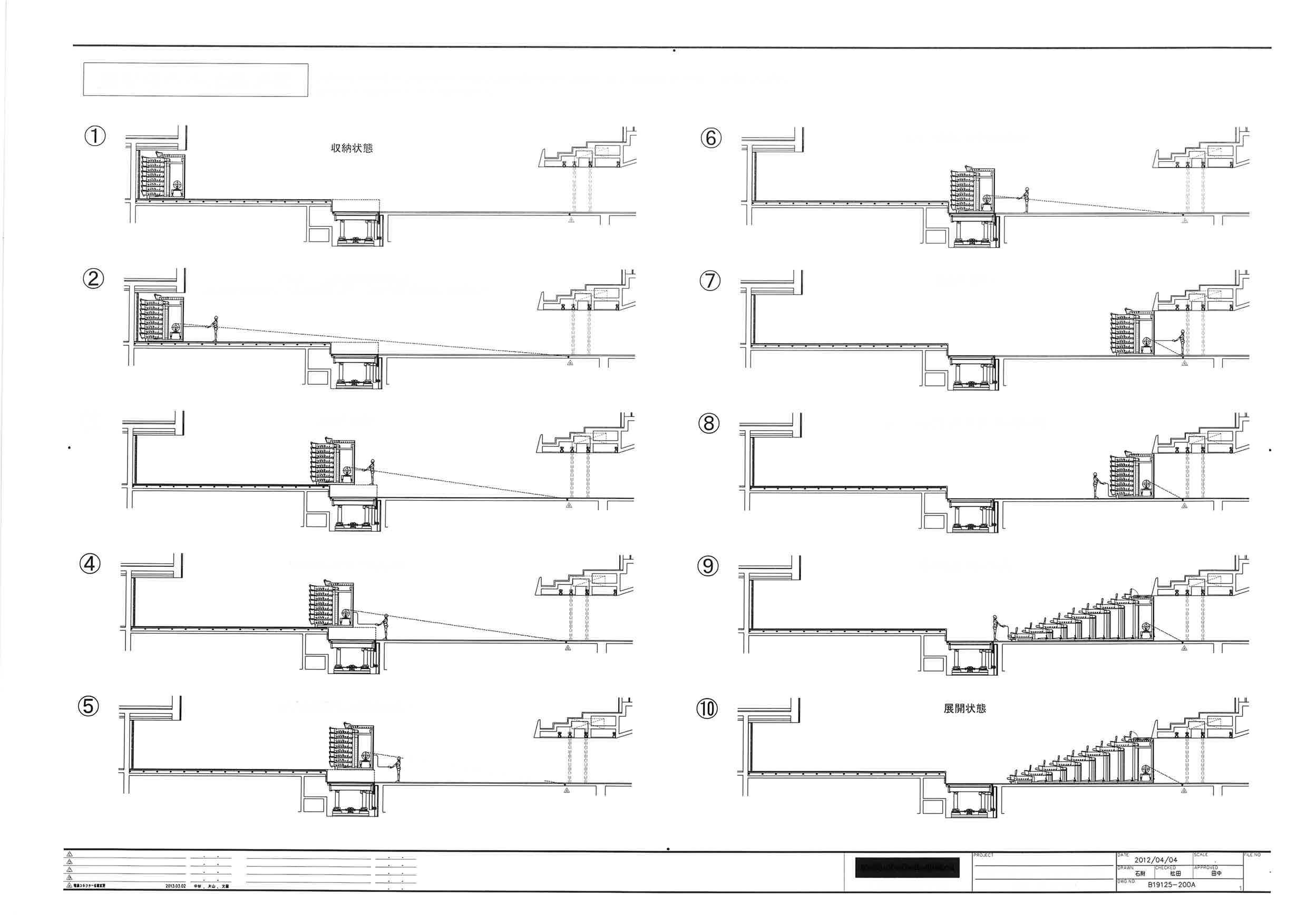
2013/ Seats: 462 Japan
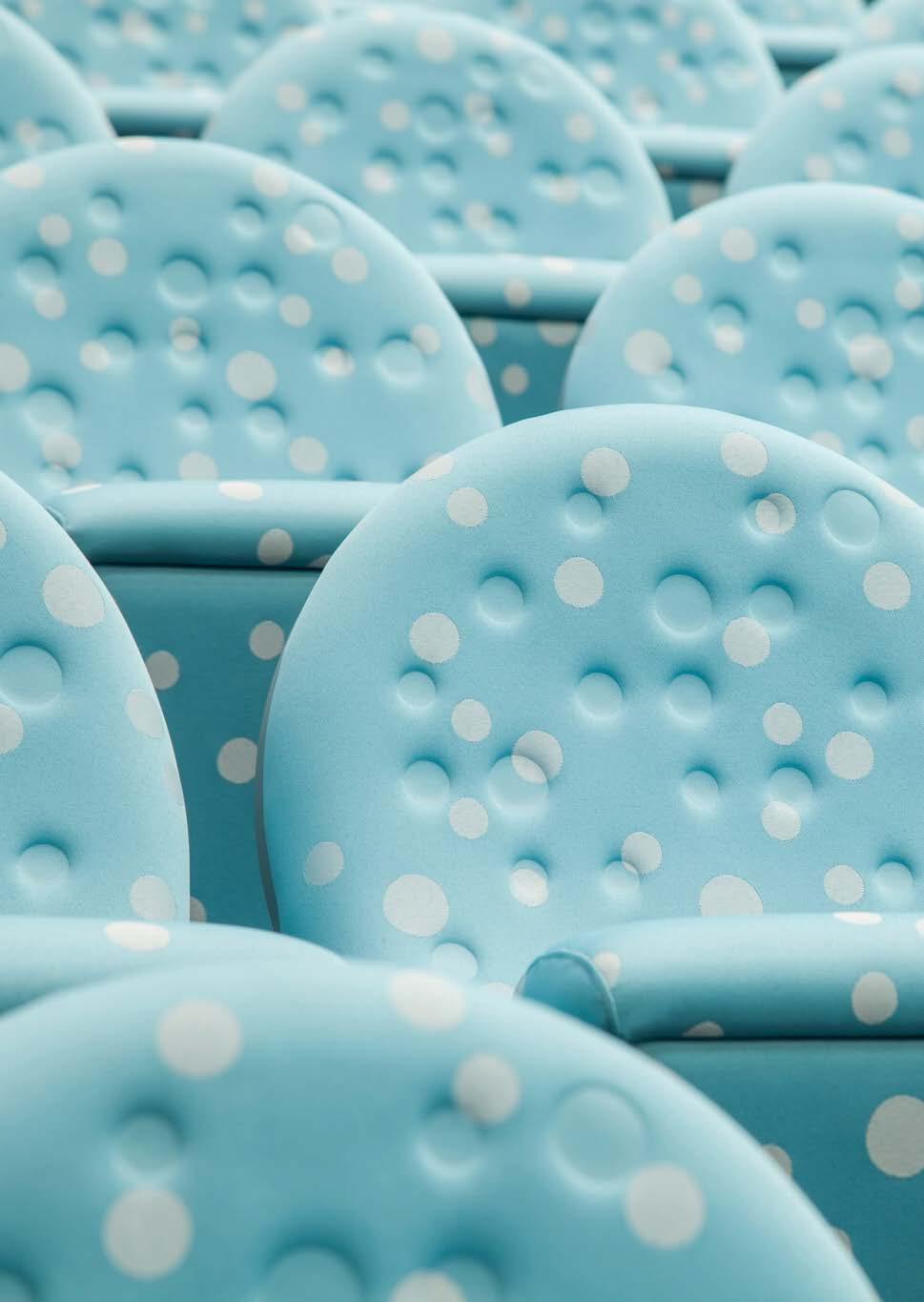
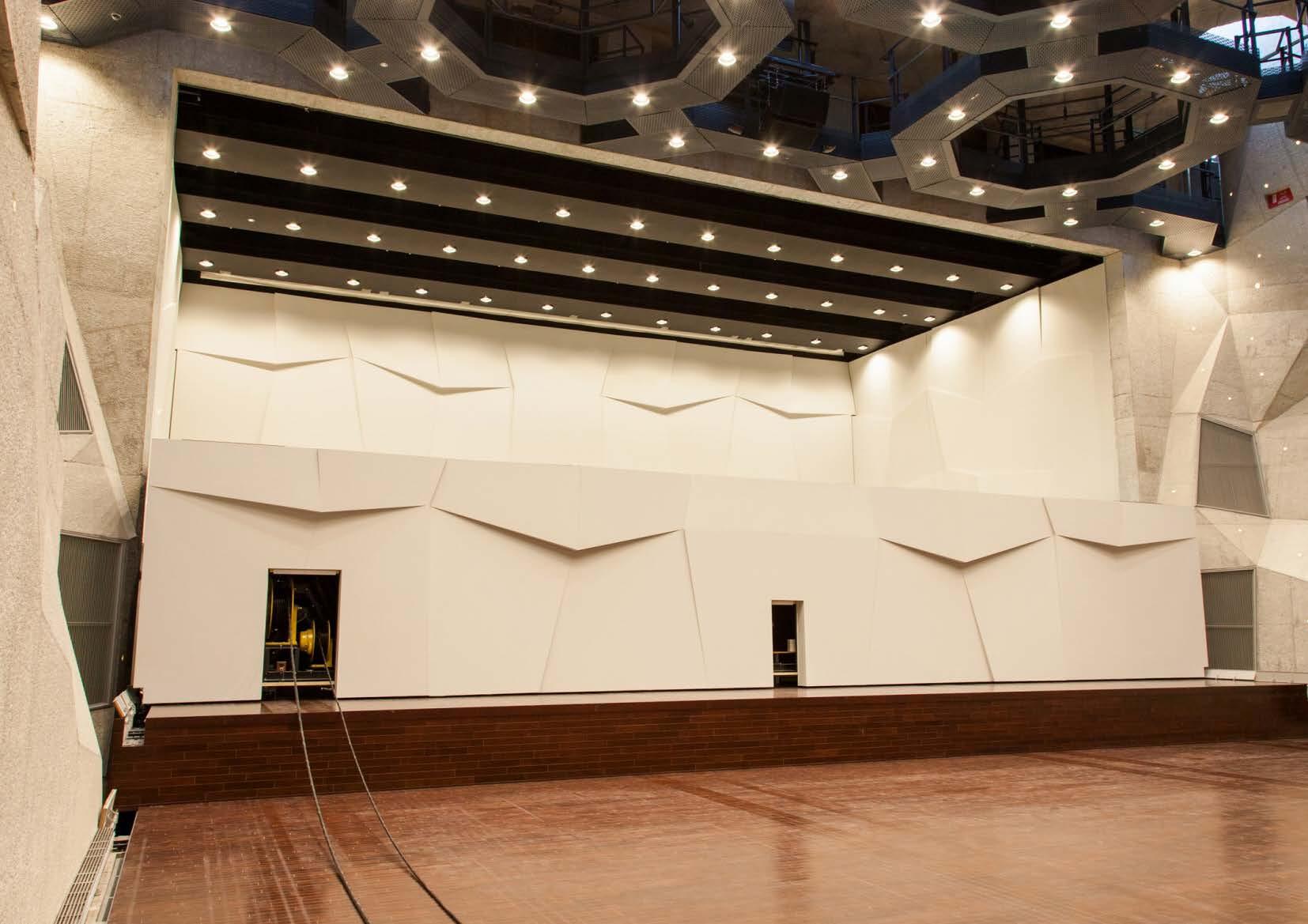


Niigata City Konan
Ward Cultural Center
This is a complex institution composed of a Multi-Purpose Theatre, a Library, a Local Museum, and the Community Centre. Each of the four zones is connected by a circulation corridor called “Cross Street”.
Developed in workshops with local authorities, the spaces were designed based on somaesthetic experiences, human scale and usability of the rooms. The structure follows the space, and the elaborately uneven walls distribute air conditioning and natural lighting. Its fissured concrete structure acts as a breathing skin to activate the building.
“We designed the stage’s acoustic reflector system. We have also devised a mechanism of brackets attached to the rear concrete structure of the stage to realise the stage’s mobile acoustic reflector. The arms of the mechanism can push the acoustic reflector into a position that adds about 3m to the depth of the stage. (The standard configuration is 8m). The alternative configuration gives this small stage area enough of an opposing stage to accommodate large orchestras. The colour palette for the seat upholstery includes a yellow green background with shades of brown and orange woven into the fabric.”
Una institución compleja compuesta de un Teatro Multiuso, una Biblioteca, un Museo Local, y el Centro de la Comunidad. Cada una de las cuatro zonas está conectada por un pasillo de circulación denominada “Calle Cruzada”.
Desarrollado en los talleres con las autoridades locales, los espacios fueron diseñados sobre la base de experiencias somestésicas, la escala humana y la facilidad de uso de las habitaciones. La estructura sigue el espacio, y las paredes elaboradas desiguales distribuyen el aire acondicionado y la iluminación natural. Su estructura de hormigón con fisuras actúa como una piel de respiración para activar el edificio.
“Hemos diseñado el sistema reflector acústico del escenario. También hemos ideado un mecanismo de soportes unidos a la estructura de hormigón trasera del escenario para realizar el reflector acústico móvil del mismo. Los brazos del mecanismo pueden empujar el reflector acústico a una posición que agrega unos 3 m. a la profundidad del escenario. (La configuración estándar es de 8 m.) La configuración alternativa le da a esta zona este pequeño escenario contrario suficiente como para albergar grandes orquestas. La paleta de colores para la tapicería de los asientos incluye un fondo de color verde amarillo con tonos de marrón y naranja tejido en la tela.”
2012 / Seats: 399 Japan

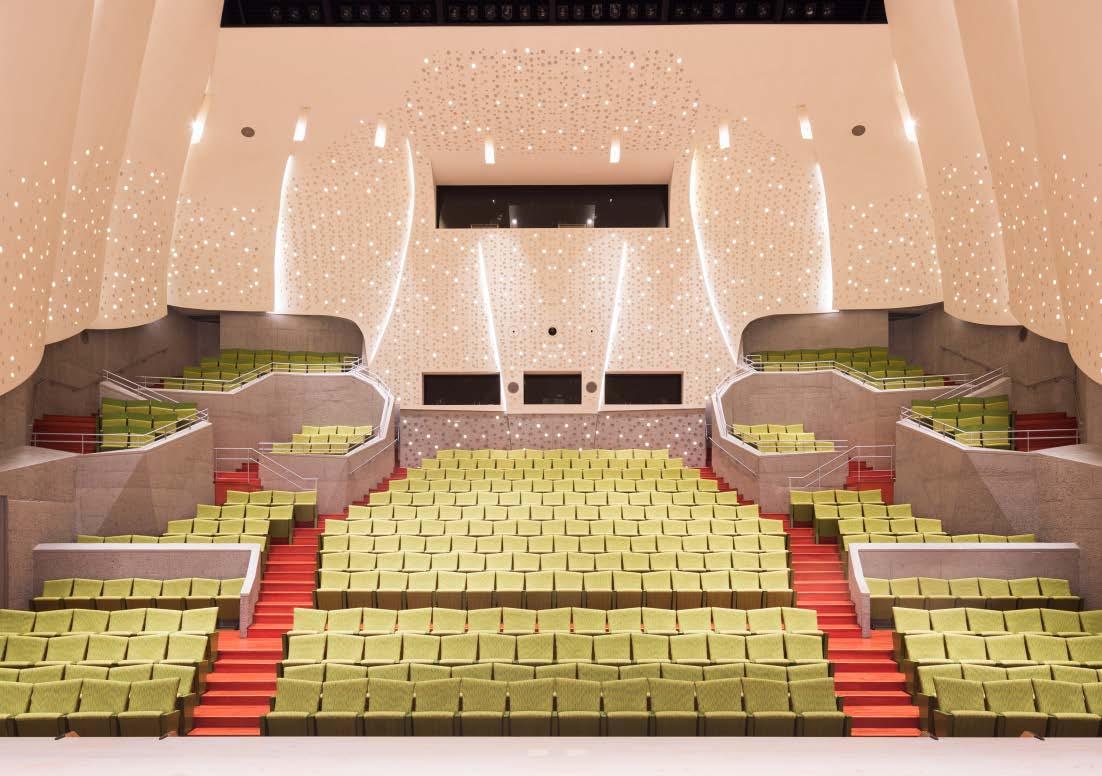
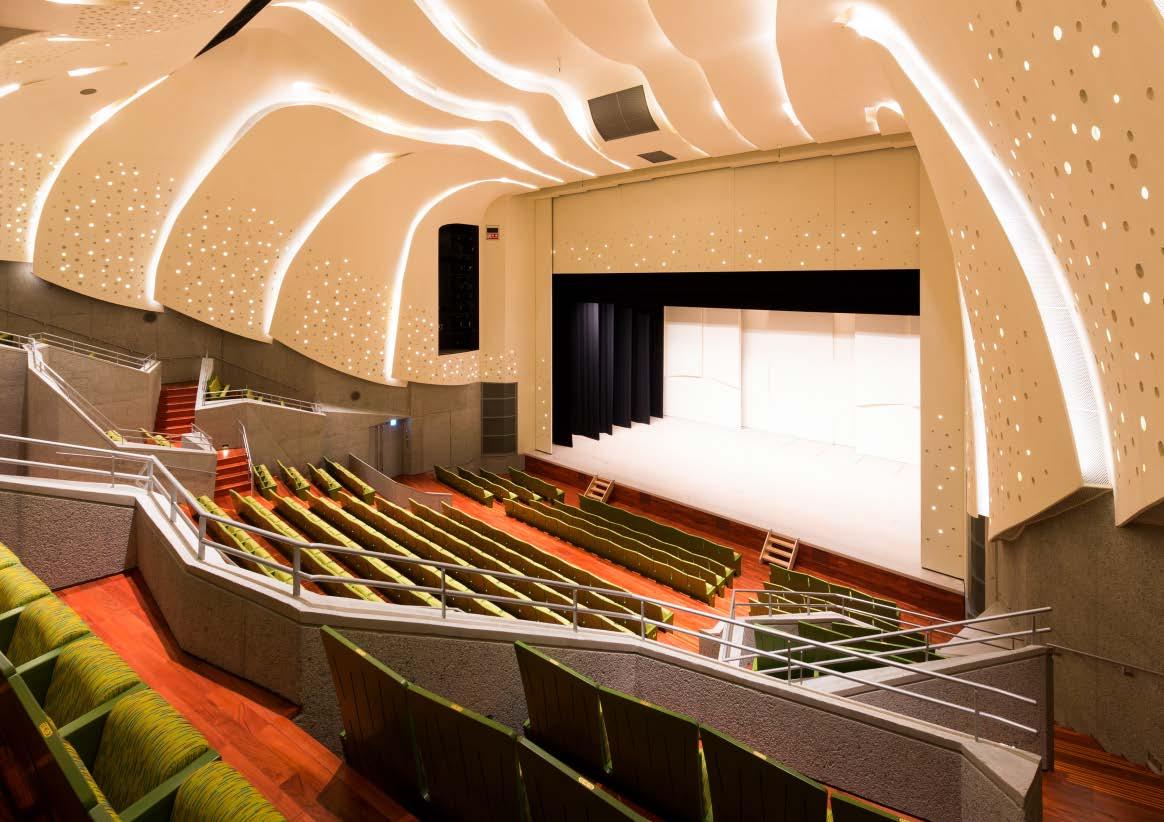
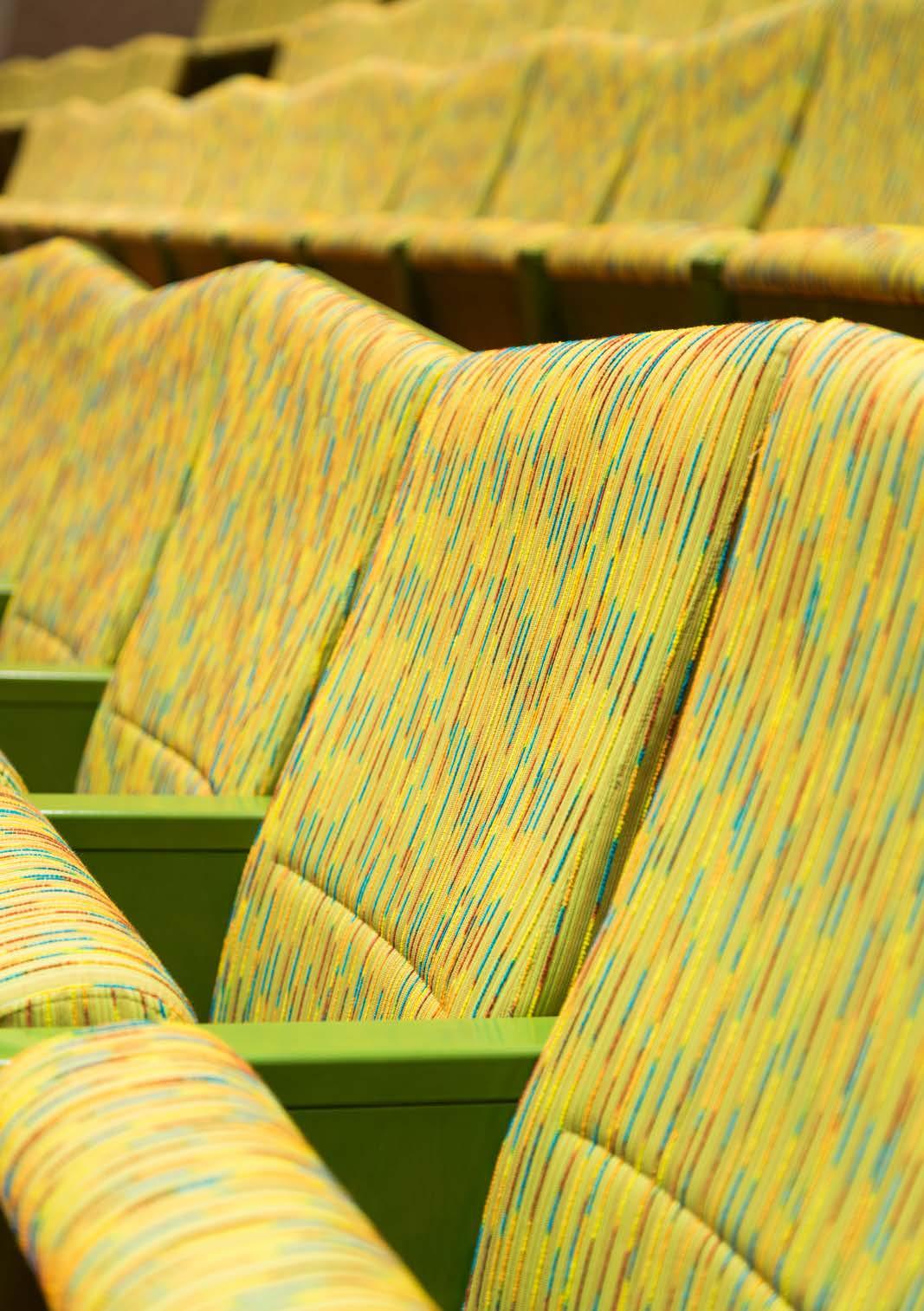
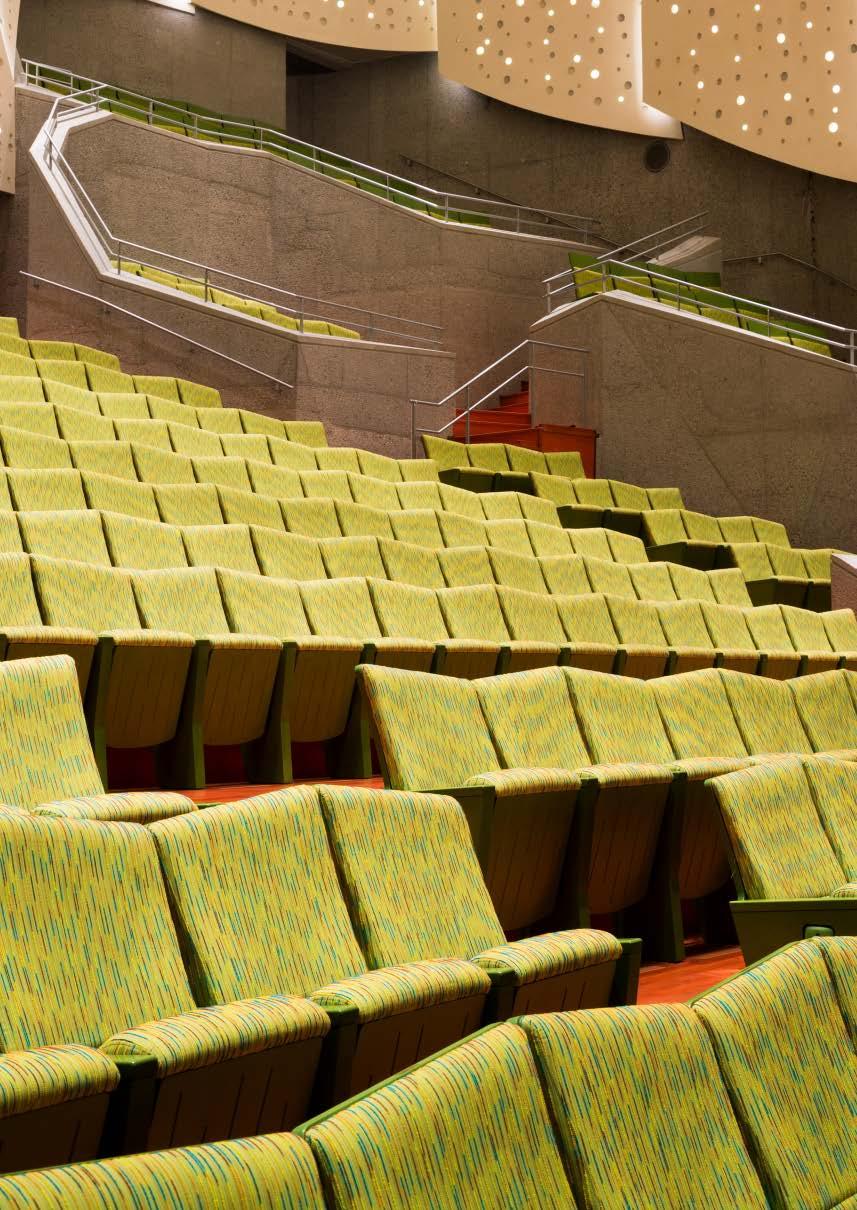
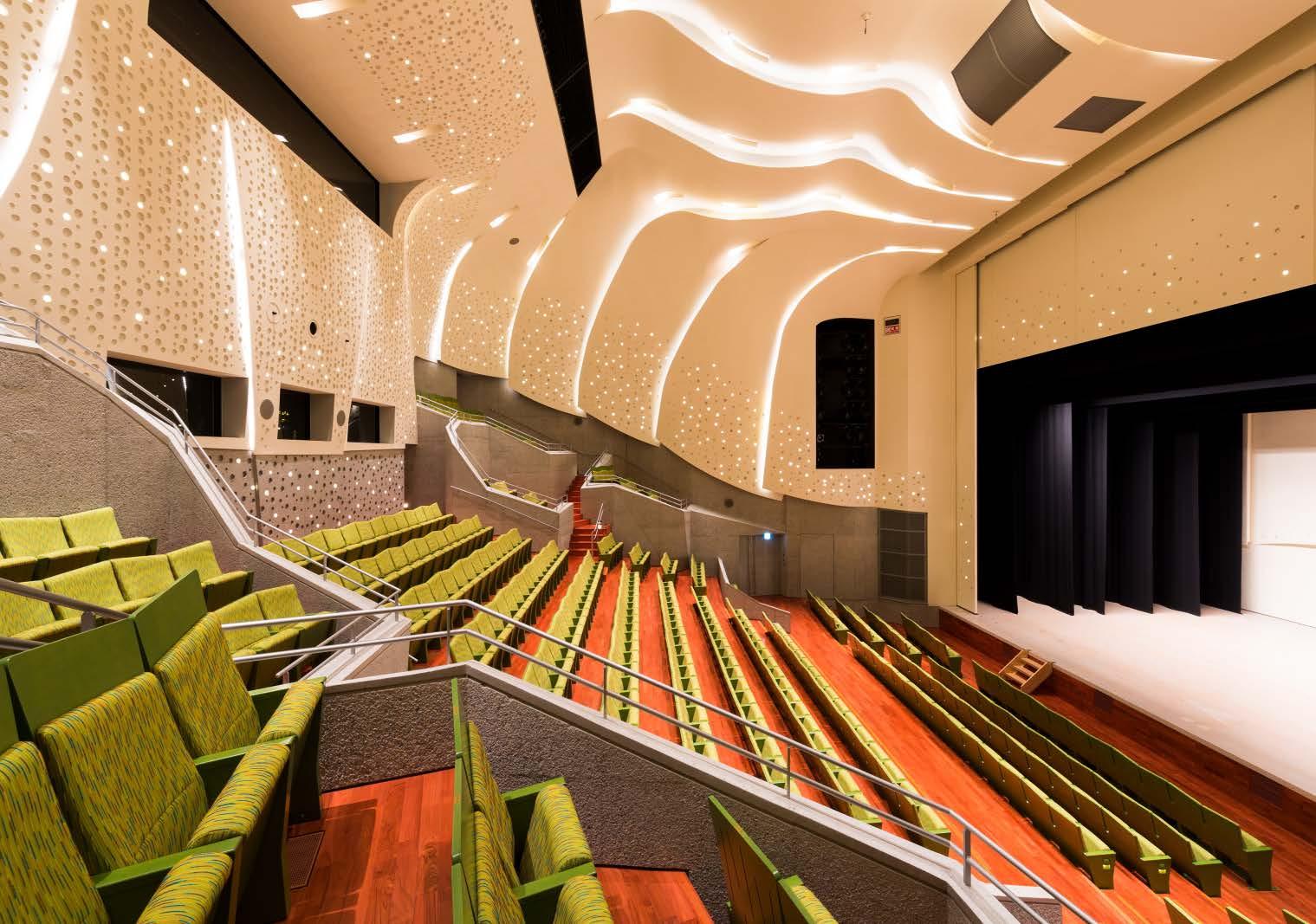
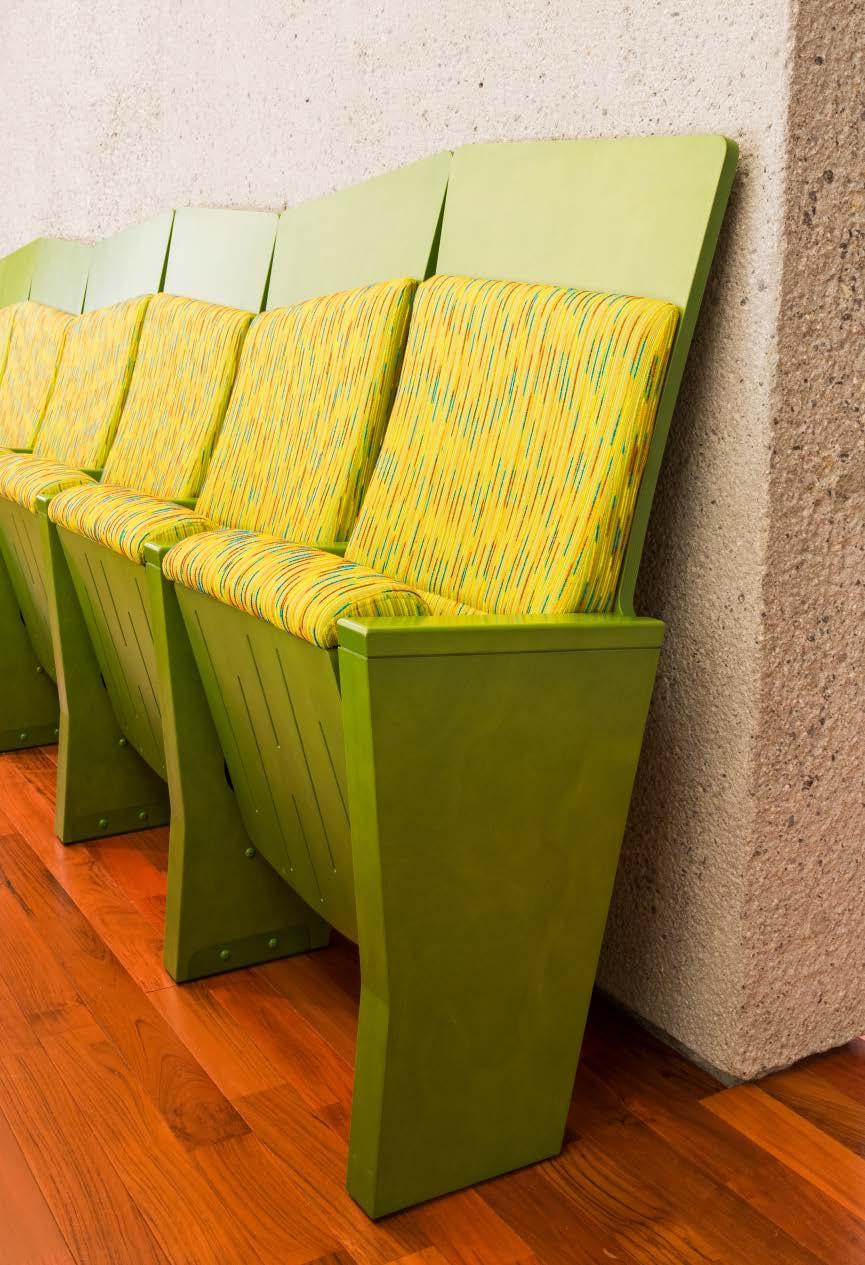


Perkins and Will
Princess Nora Bint Abdulrahman University
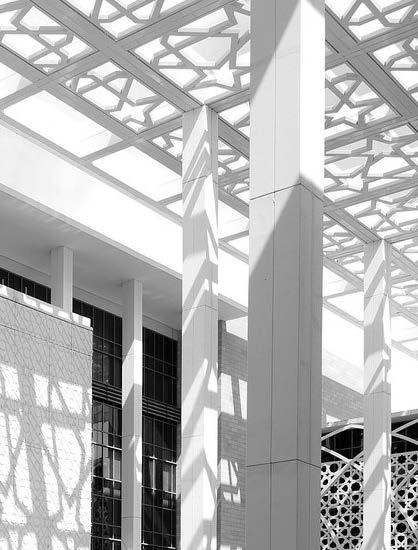
Perkins and Will is an interdisciplinary, research-based architecture and design firm established in 1935 and founded on the belief that design has the power to transform lives and enhance communities. Each of the firm’s 24 offices focuses on local, regional, and global work in a variety of practice areas. With hundreds of award-winning projects annually, Perkins and Will is ranked among the top global design firms.
Perkins and Will es una firma de arquitectura y diseño interdisciplinaria basada en la investigación establecida en 1935 y fundada en la creencia de que el diseño tiene el poder de transformar vidas y mejorar las comunidades. Cada una de las 24 oficinas de la firma se enfoca en el trabajo local, regional y global en una variedad de áreas de práctica. Con cientos de proyectos ganadores de premios cada año, Perkins and Will está clasificada entre las principales firmas de diseño a nivel mundial.
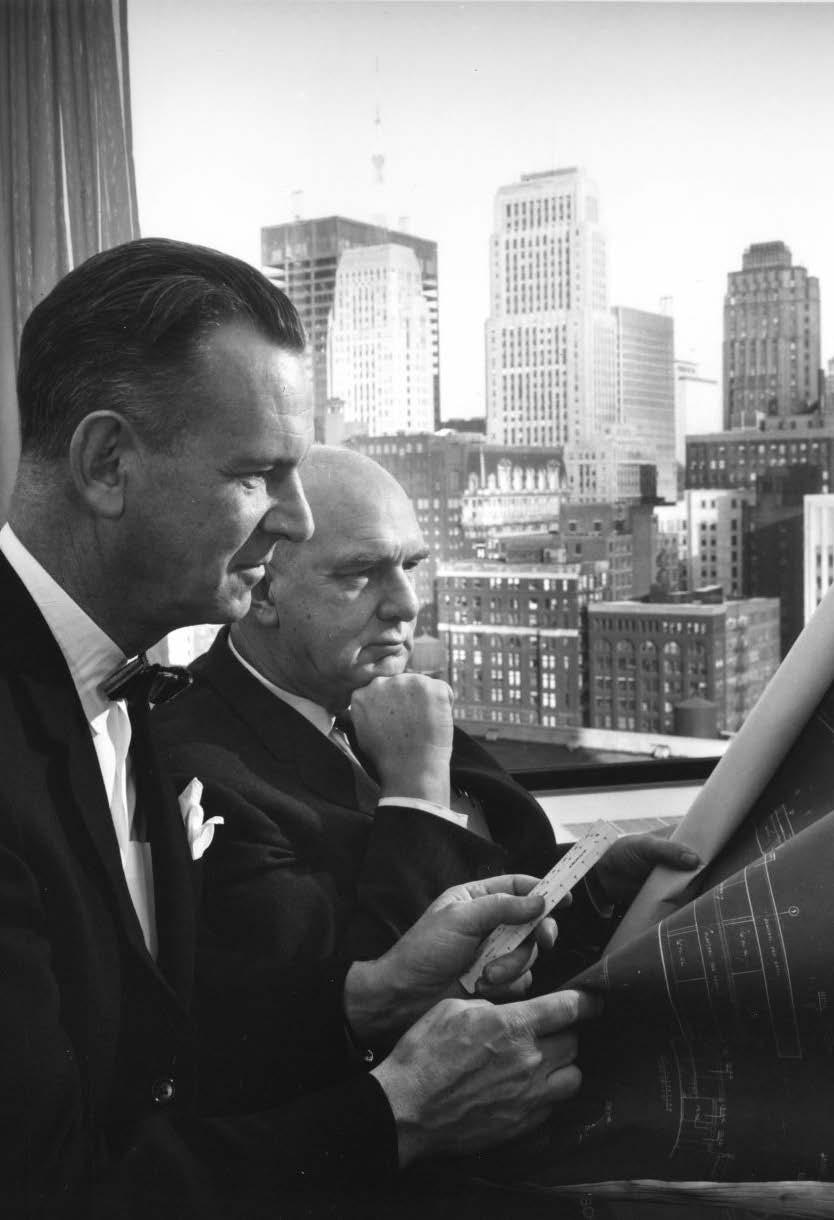
KOTOBUKI SEATING GROUP
Princess Nora Bint Abdulrahman University
Princess Nora Bint Abdulrahman University (PNU), offers state-of-the-art educational facilities in all major academic disciplines to as many as 60,000 female undergraduate students. The largest university designed for women in the world and comprised of 32 million square feet (three million square meters), PNU is a global leader in 21st century learning.
Regional architecture and cultural tradition inspired the use of latticework partitions or mashrabiy’yah to strategically screen students for privacy in exterior spaces and allow more visibility within the campus. The main auditorium, equipped with Quinette Gallay seats, it has approximately 2000 seats.
La Universidad Princesa Nora Bint Abdulrahman (PNU), ofrece instalaciones educativas de vanguardia en todas las principales disciplinas académicas a nada menos que 60.000 estudiantes universitarias.
La mayor universidad diseñada para mujeres en el mundo y compuesta por 32 millones de pies cuadrados (tres millones de metros cuadrados), la PNU es un líder global en el aprendizaje del siglo XXI.
La arquitectura regional y la tradición cultural inspiraron el uso de tabiques de celosía o mashrabiy’yah para proteger estratégicamente a los estudiantes de la privacidad en los espacios exteriores y permitir una mayor visibilidad dentro del campus. El auditorio principal, equipado con butacas Quinette Gallay, tiene aproximadamente 2000 asientos.
2013 / Seats: 4.000
Saudi Arabia

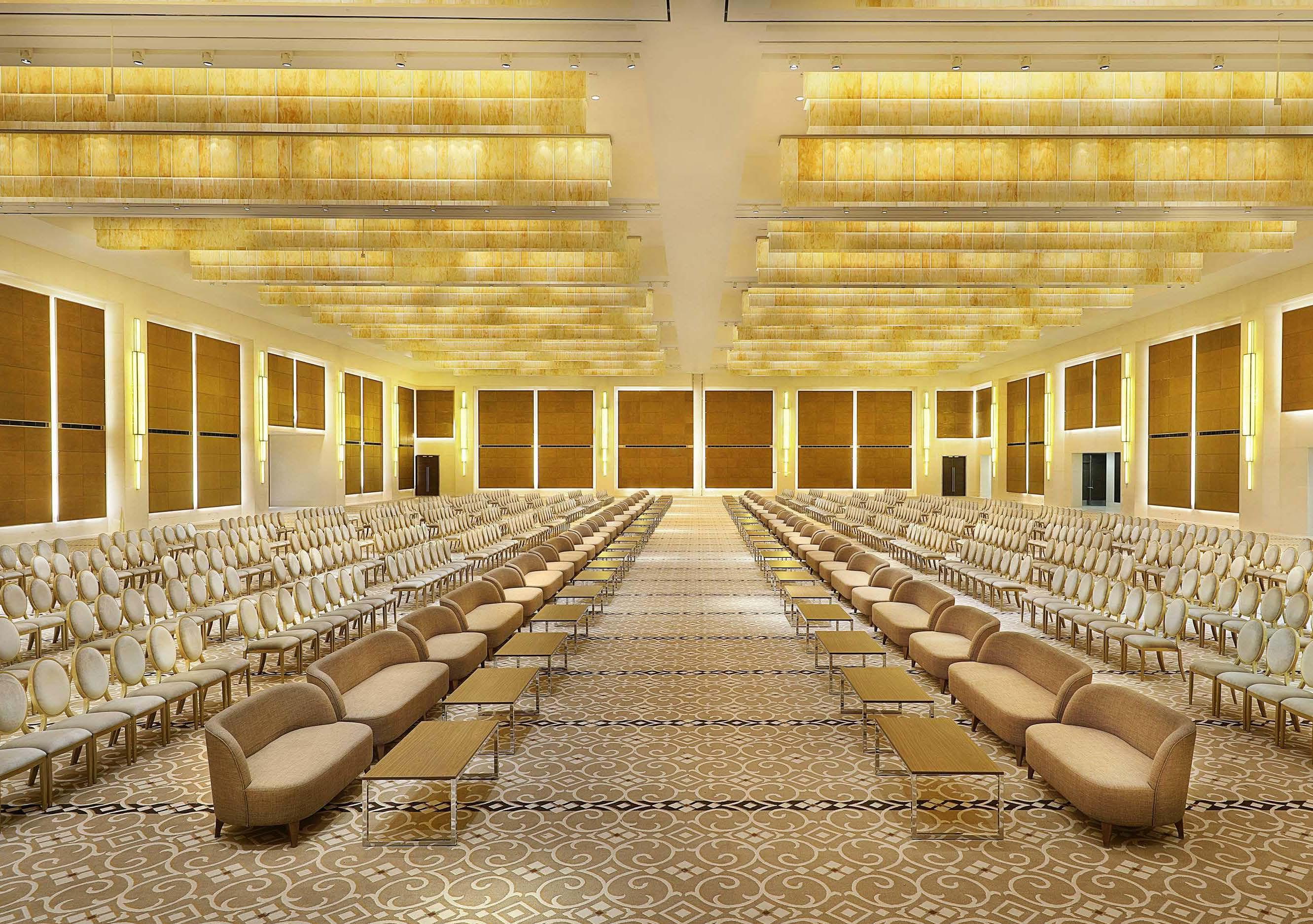
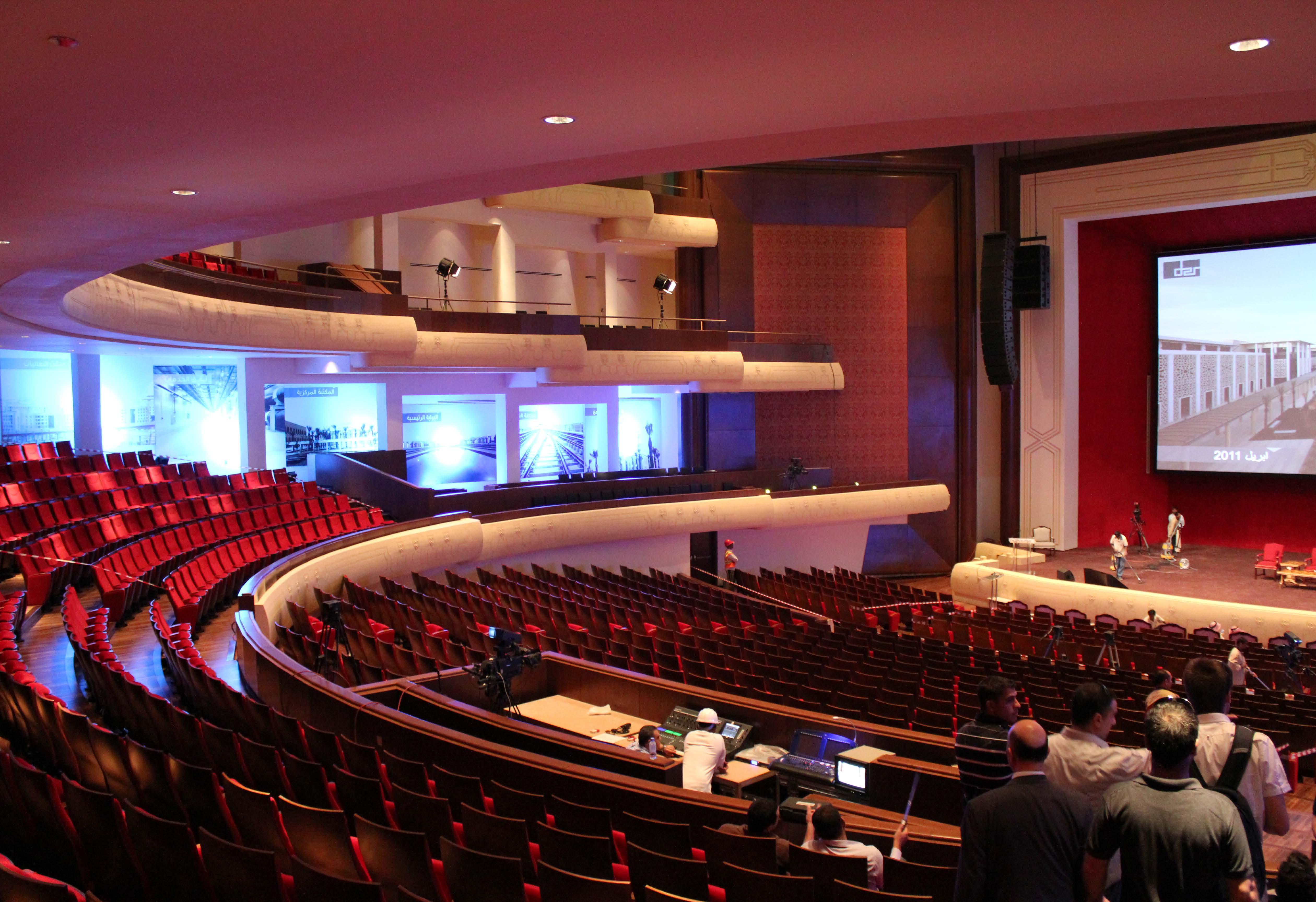
Arata Isozaki

Arata Osozaki is a Japanese architect, urban designer and theorist of Ōita. He established his own practice in the 1960s and became the first Japanese architect to forge a deep and lasting relationship between East and West. He received the RIBA Gold Medal in 1986 and the Pritzker Architecture Prize in 2019. Isozaki has been described as an architect who refuses to get stuck in one architectural style, noting “how each of his designs is a specific solution born out of the context of the project.”
Arata Osozaki es un arquitecto, diseñador urbano y teórico japonés de Ōita. Estableció su propio estudio en la década de los 60 y se convirtió en el primer arquitecto japonés en forjar una relación profunda y duradera entre Oriente y Occidente. Recibió la Medalla de Oro RIBA en 1986 y el Premio de Arquitectura Pritzker en 2019. Isozaki ha sido descrito como un arquitecto que se niega a quedarse atrapado en un estilo arquitectónico, destacando “cómo cada uno de sus diseños es una solución específica nacida del contexto del proyecto”.

KOTOBUKI SEATING GROUP
Nara Centennial Hall
Nara Centennial Hall Main Hall
In February of 1999, the Nara Centennial Hall was built to celebrate the passing of 100 years from the incorporation of the city. The building was constructed with the Pantadome system, a patented system proposed by Mamoru Kawaguchi, an architect and structural designer.
The Main Hall of the building can hold more people than any other venue in the prefecture. In this hall, the stairs are in the same space. This rare layout means that the audience can access upper seating levels without leaving the main area. Above these stairs, the upper level is open, and the lighting creates atmospheric patterns of light and darkness. Continuing on to the next level, the seating has been broken into separate blocks, which seem to float in the air.
In the audience seating blocks, there are rails in the floor which allow movement of the seats along the rail to adjust seating for different events. The seats towards the front of the first floor can also move. There are elevated walkways to the stage on either side, which can be used as part of a performance, or for wheelchair seating. This is a hall which can be adjusted in an impressive variety of ways.
En febrero de 1999, se construyó el Salón del Centenario de Nara para celebrar el paso de 100 años desde la incorporación de la ciudad. El edificio se construyó con el sistema Pantadome, un sistema patentado propuesto por Mamoru Kawaguchi, arquitecto y diseñador estructural.
La sala principal del edificio tiene capacidad para más personas que cualquier otro recinto de la prefectura. En esta sala, las escaleras están en el mismo espacio. Esta rara disposición significa que el público puede acceder a los niveles superiores de asientos sin salir de la zona principal. Por encima de estas escaleras, el nivel superior está abierto y la iluminación crea patrones atmosféricos de luz y oscuridad. En el siguiente nivel, los asientos se han dividido en bloques separados, que parecen flotar en el aire.
En los bloques de asientos para el público, hay raíles en el suelo que permiten mover los asientos a lo largo del raíl para ajustarlos a los diferentes eventos. Los asientos situados en la parte delantera de la primera planta también pueden moverse. Hay pasarelas elevadas hacia el escenario a ambos lados, que pueden utilizarse como parte de una actuación, o para sentarse en silla de ruedas. Se trata de una sala que puede ajustarse de forma impresionante.
(1999) 2018 / Seats:1.476 Japan

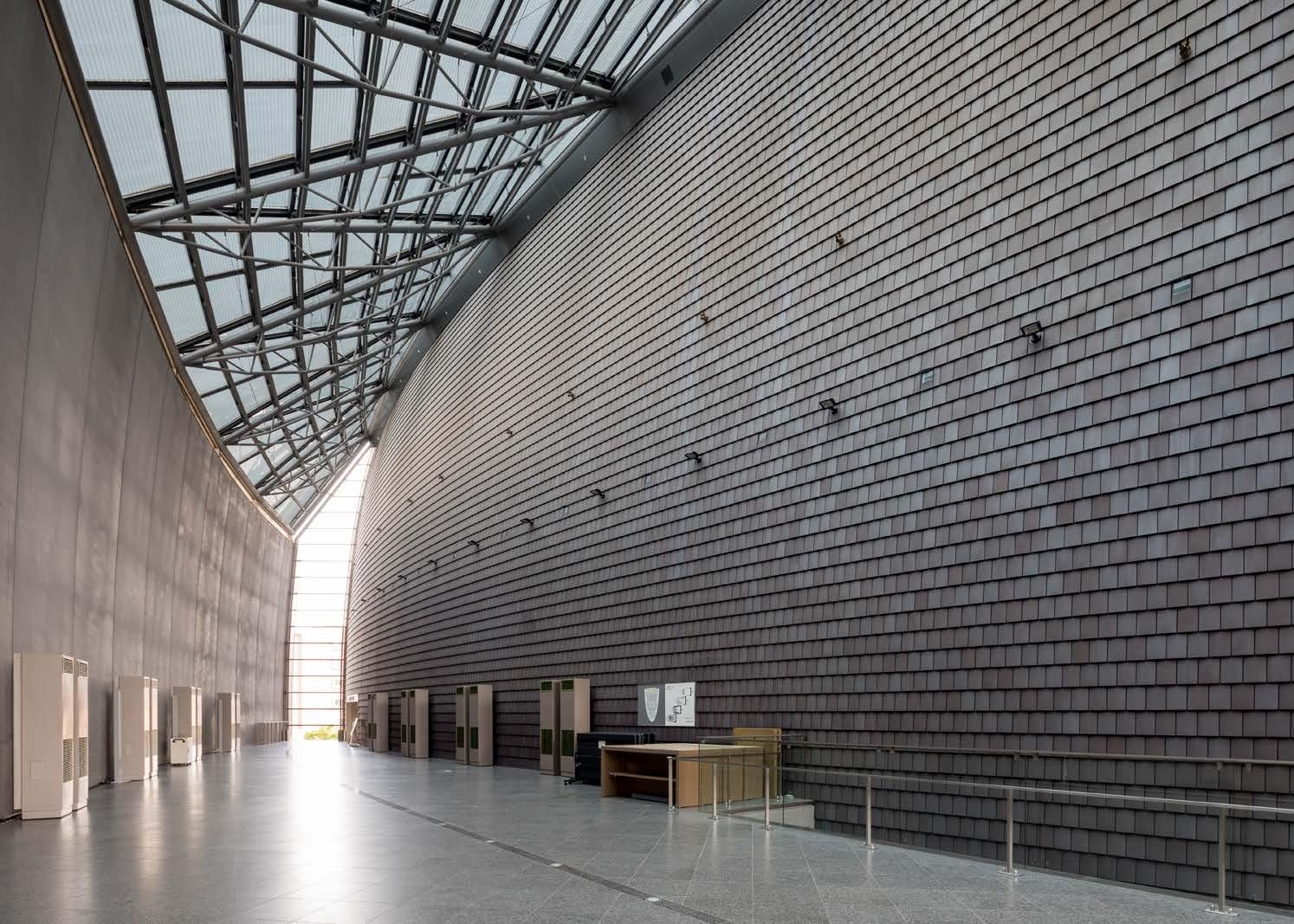
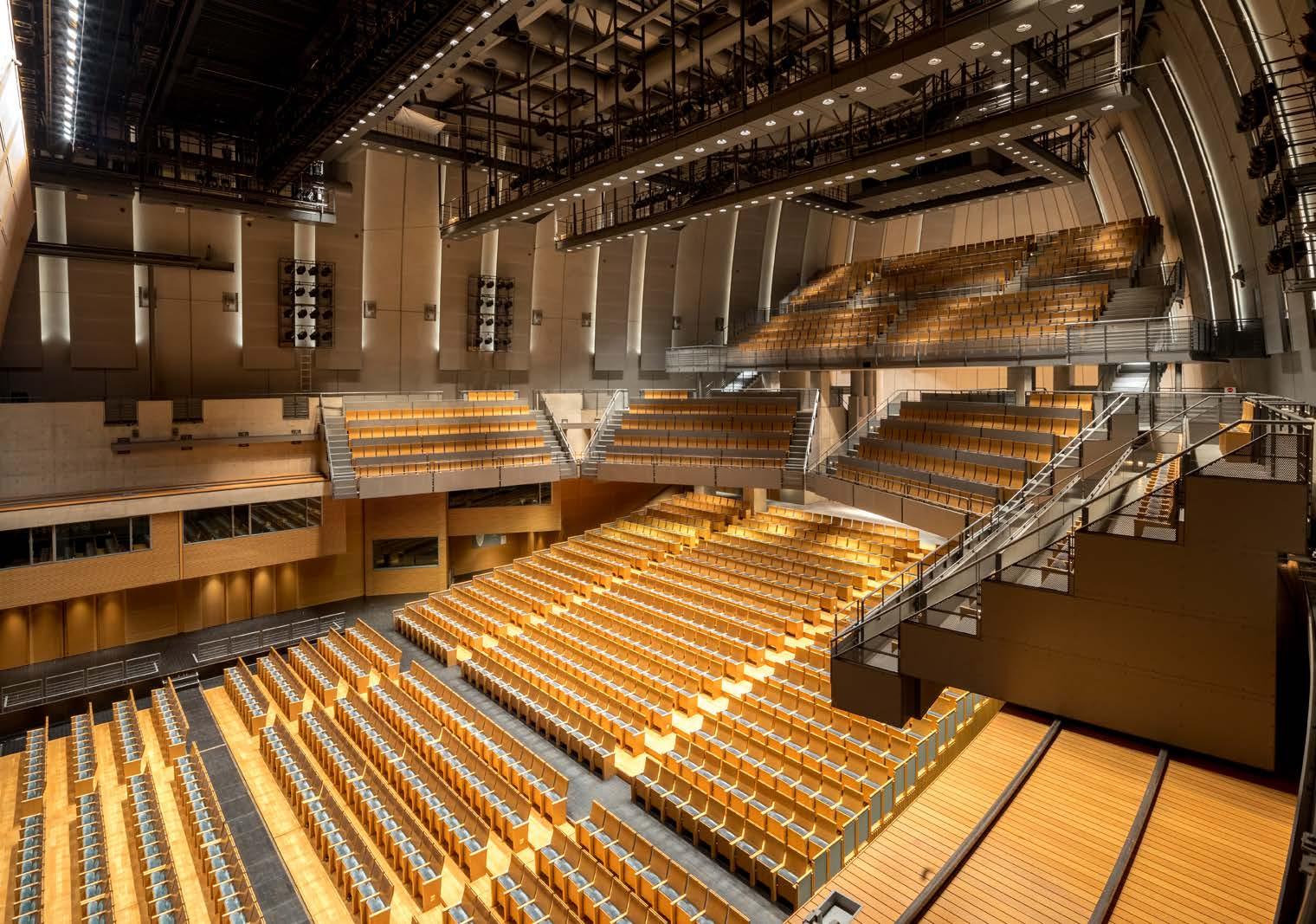
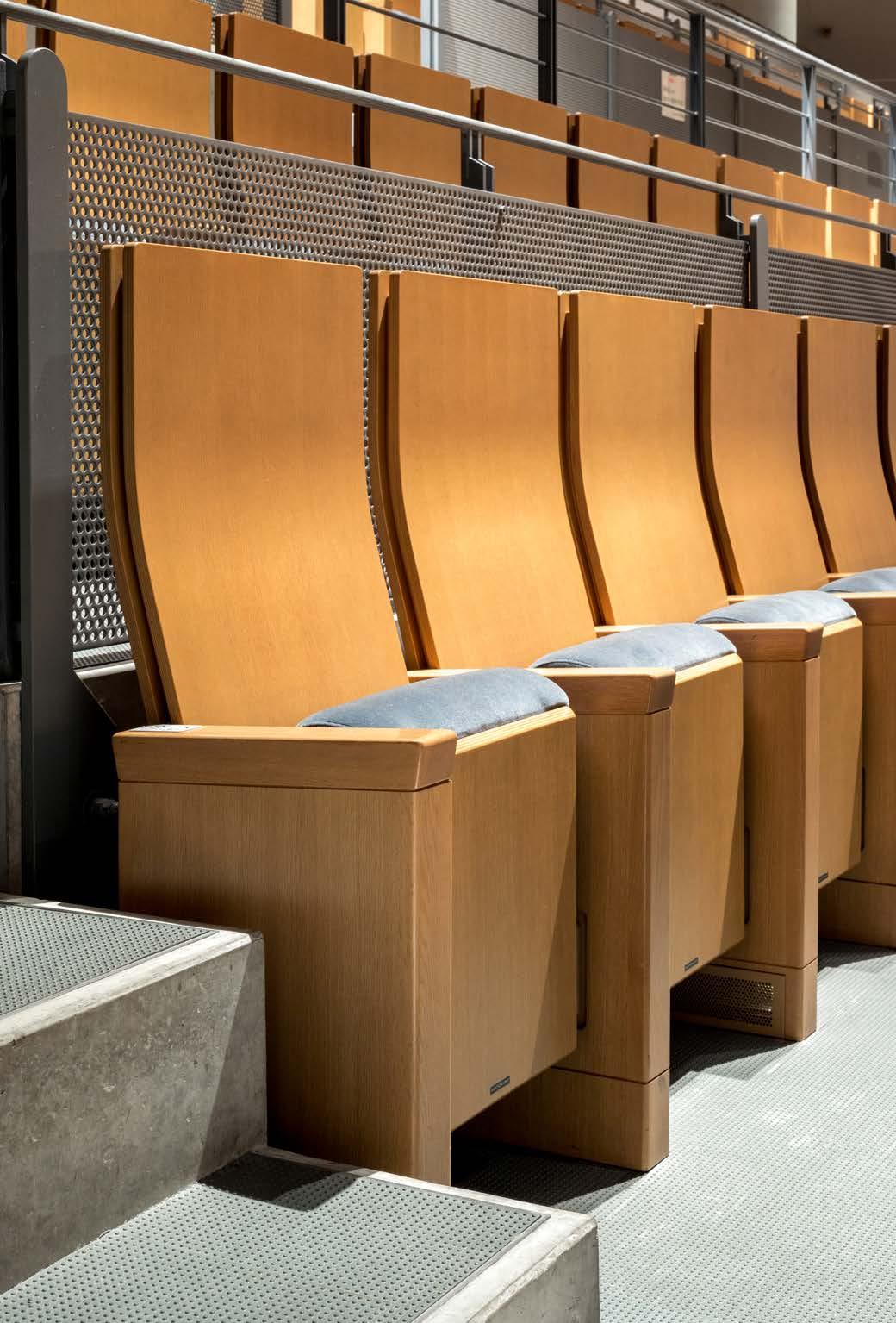
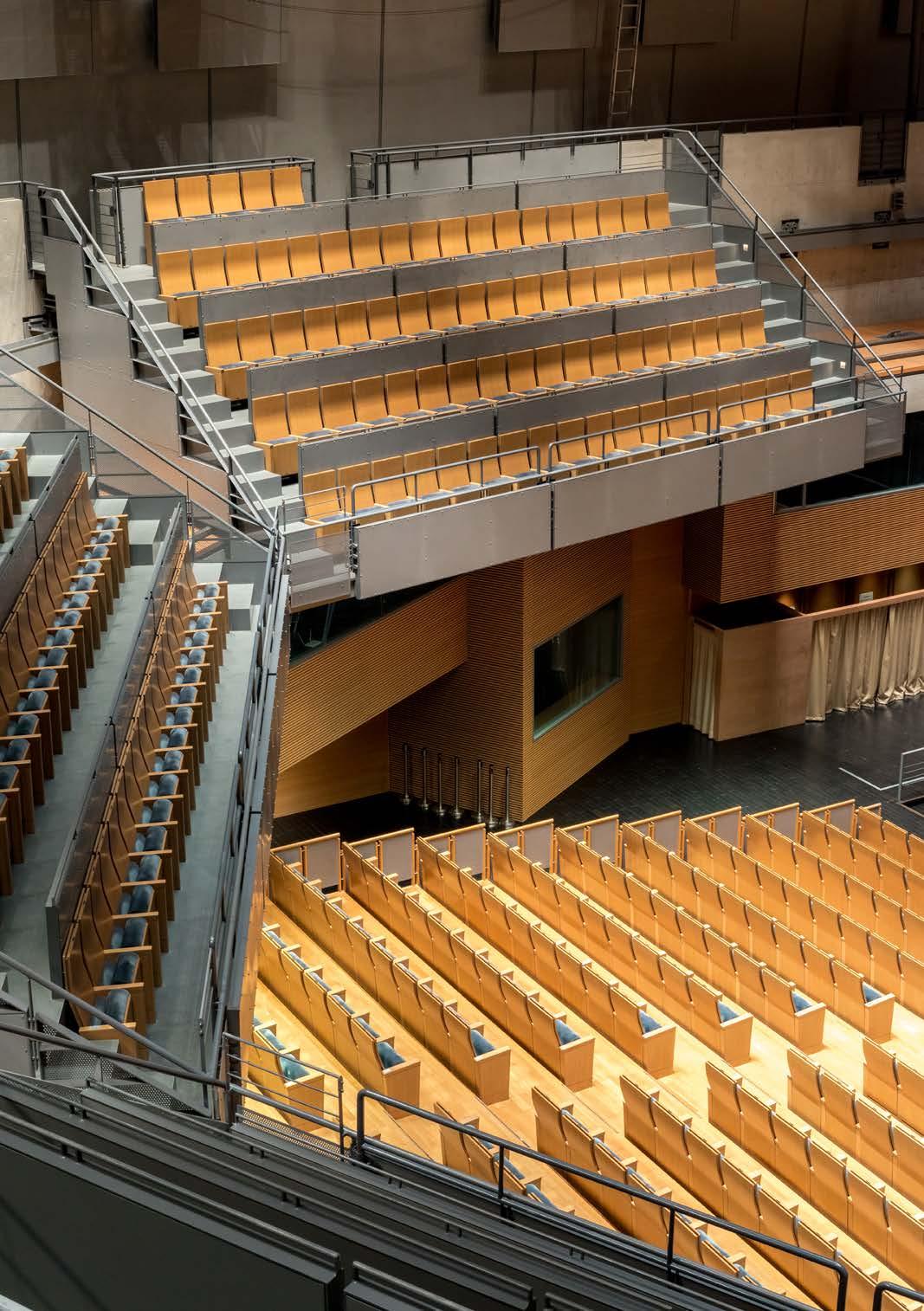

Cesar Pelli
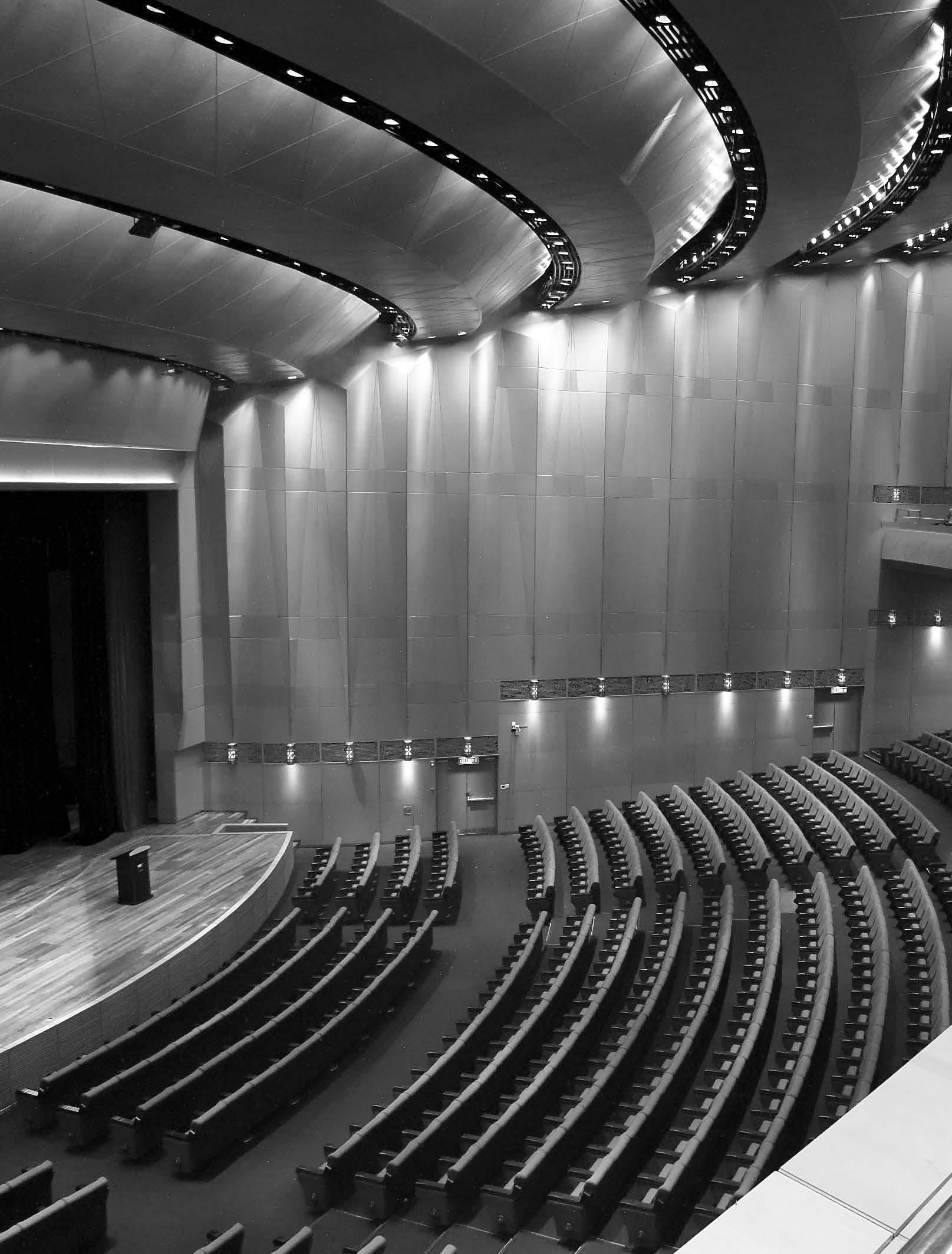
César Pelli (October 12, 1926 – July 19, 2019) was an Argentine-American architect who designed some of the world’s tallest buildings and other major urban landmarks.Two of his most notable buildings are the Petronas Towers in Kuala Lumpur and the World Financial Center in New York City. The American Institute of Architects named him one of the ten most influential living American architects in 1991 and awarded him the AIA Gold Medal in 1995.
César Pelli (12 de octubre de 1926 - 19 de julio de 2019) fue un arquitecto argentino-estadounidense que diseñó algunos de los edificios más altos del mundo y otros hitos urbanos importantes. Dos de sus edificios más notables son las Torres Petronas en Kuala Lumpur y el World Financial Center en la ciudad de Nueva York. El Instituto Americano de Arquitectos lo nombró uno de los diez arquitectos estadounidenses vivos más influyentes en 1991 y le otorgó la Medalla de Oro AIA en 1995.

KOTOBUKI SEATING GROUP
Philarmonics KLCC
The Petronas Philharmonic Hall (Malay: Dewan Filharmonik Petronas) is Malaysia’s first concert hall built specifically for classical music. It is the home of the Malaysian Philharmonic Orchestra (MPO), and has hosted many of the world’s leading orchestras. The concert hall was designed by Cesar Pelli based on the inspiration from the traditional shoebox shape of the 19th century European classical music halls. It has the capacity to accommodate for 920 seats which includes box seats, corporate suites and a royal suite.
The stage floor is designed for flexibility, has an approximate area of 297m2, and can be extended to 369m2. The hall is constructed with concealed movable ceiling panels which can be adjusted to alter the volume in the hall and simulate a wide range of acoustic environments. There are seven movable panels in the upper ceiling.
El Petronas Philharmonic Hall (malayo: Dewan Filharmonik Petronas) es la primera sala de conciertos de Malasia construida específicamente para la música clásica. Es la sede de la Orquesta Filarmónica de Malasia (MPO), y ha acogido a muchas de las principales orquestas del mundo.
La sala de conciertos fue diseñada por Cesar Pelli inspirándose en la tradicional forma de caja de zapatos de las salas de música clásica europeas del siglo XIX. Tiene capacidad para 920 asientos, entre los que se incluyen palcos, suites corporativas y una suite real.
El piso del escenario está diseñado para ser flexible, tiene una superficie aproximada de 297m2, y puede ampliarse hasta 369m2. La sala está construida con paneles móviles ocultos en el techo que pueden ajustarse para modificar el volumen de la sala y simular una amplia gama de entornos acústicos. Hay siete paneles móviles en el techo superior.
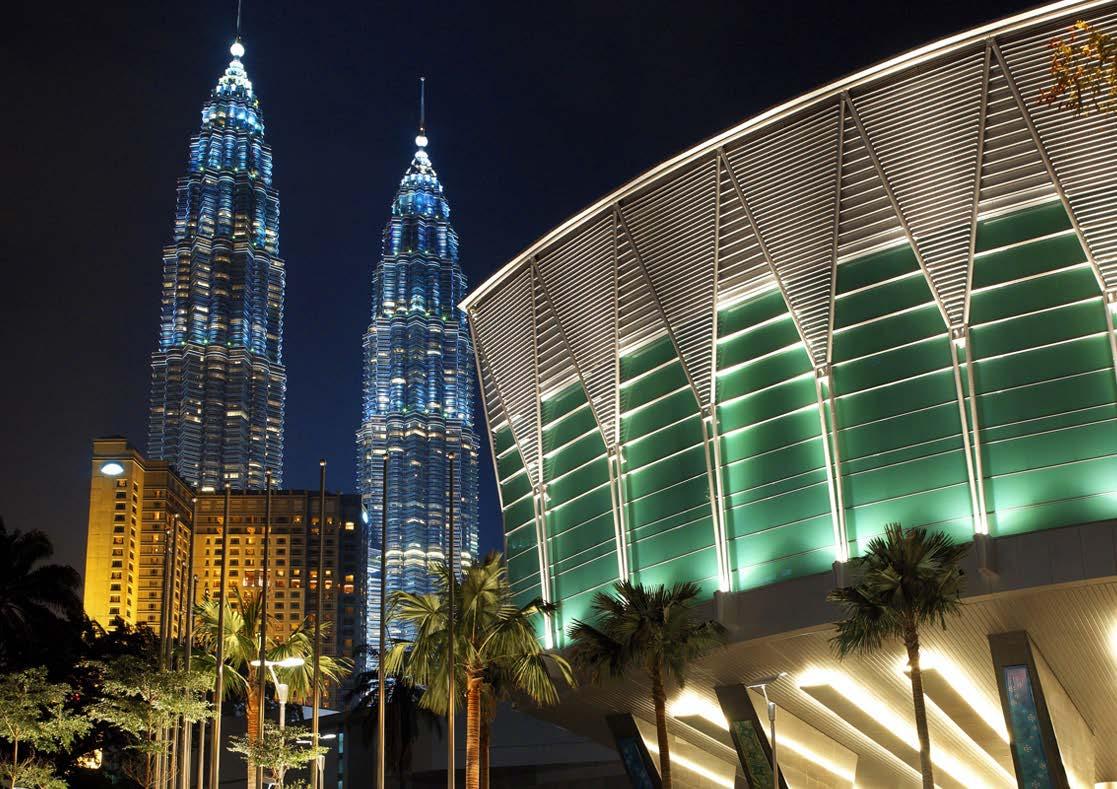
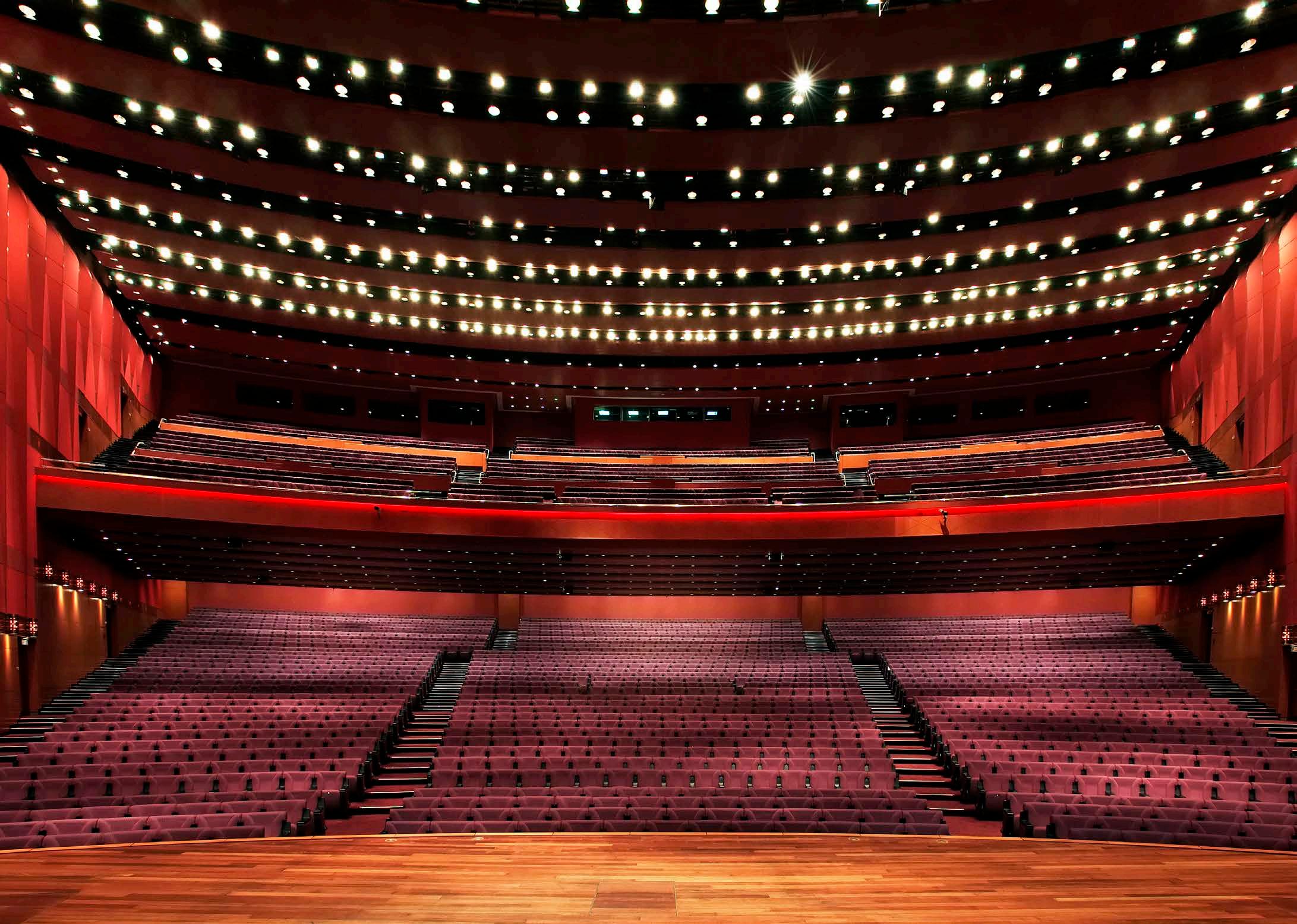
1998 / Seats:920 Malasya Philarmonics KLCC P1 PORTAB ON OL P G H M R S Q 58 56 53 R W Y W X U D EE FF GG HH JJ PP NN MM LL KK 57 35 34 P M L G Q R S U V W D EE GG HH JJ KK LL MM NN PP KK JJ HH GG FF EE D CC BB AA Z X V U T P M H E H R Q P N C C L REFER TO LO UP DETA A' A 23 22 21 22W 22E FF 4849 FF 46575 FF FORESTAG AR FF 45 AA 57 BB CC 34 AA BB CC 82 82 82 76 52 39 15 15 B C BB CC AA D E F M N 83 83 76 73 73 53 54 55 55 55 56 36 36 37 37 16 16 17 17 18 18 87 72 57 58 58 59 59 32 32 31 21 20 20 20 20 19 19 89 EE FF GG HH JJ KK LL MM NN PP 89 89 89 89 66 64 61 58 58 59 60 33 33 33 32 32 31 28 28
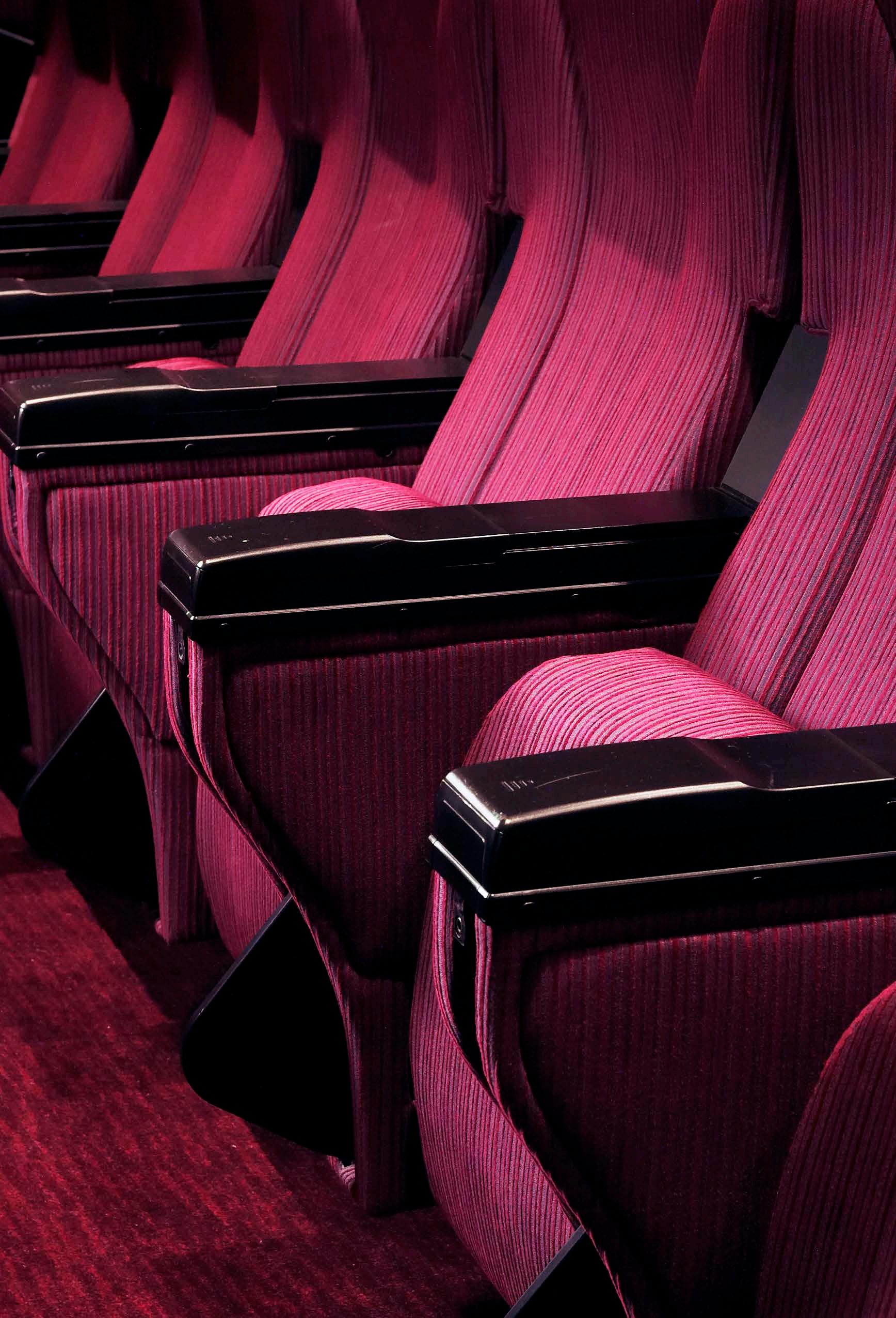

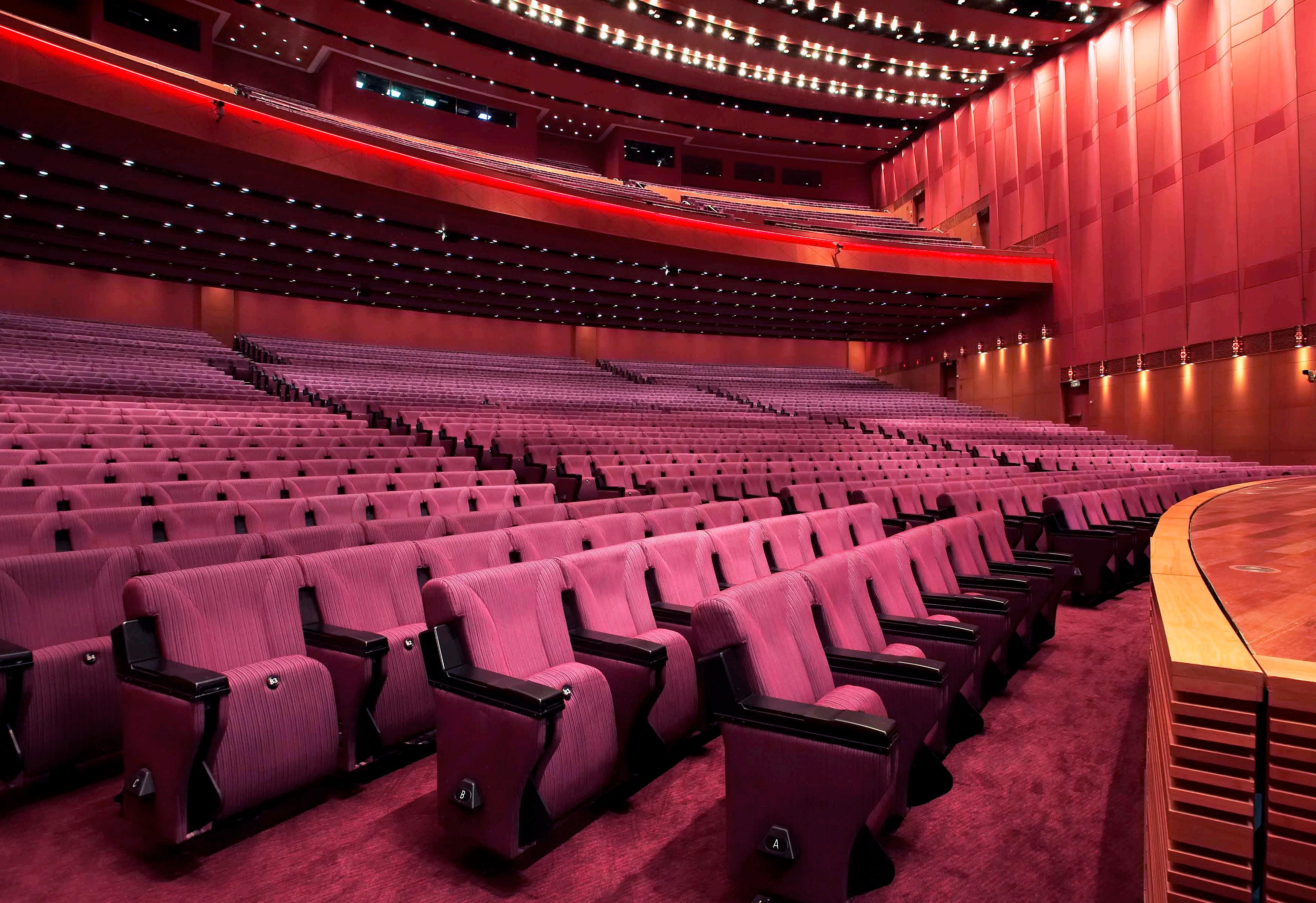
Moshe Safdie

Moshe Safdie CC FAIA FRAIC OAA (born July 14, 1938) is an architect, urban planner, educator, theorist, and author, with Israeli, Canadian, and American citizenship. He is known for incorporating principles of socially responsible design in his 50 year career. His projects include cultural, educational, and civic institutions; neighborhoods and public parks; housing; mixed-use urban centers; airports; and master plans for existing communities and entirely new cities in North and South America, the Middle East, and Asia.
Moshe Safdie CC FAIA FRAIC OAA (nacido el 14 de julio de 1938) es arquitecto, urbanista, educador, teórico y autor, con ciudadanía israelí, canadiense y estadounidense. Es conocido por incorporar principios de diseño socialmente responsable en sus 50 años de carrera. Sus proyectos incluyen instituciones culturales, educativas y cívicas; barrios y parques públicos; alojamiento; centros urbanos de uso mixto; aeropuertos; y planes maestros para comunidades existentes y ciudades completamente nuevas en América del Norte y del Sur, Medio Oriente y Asia.
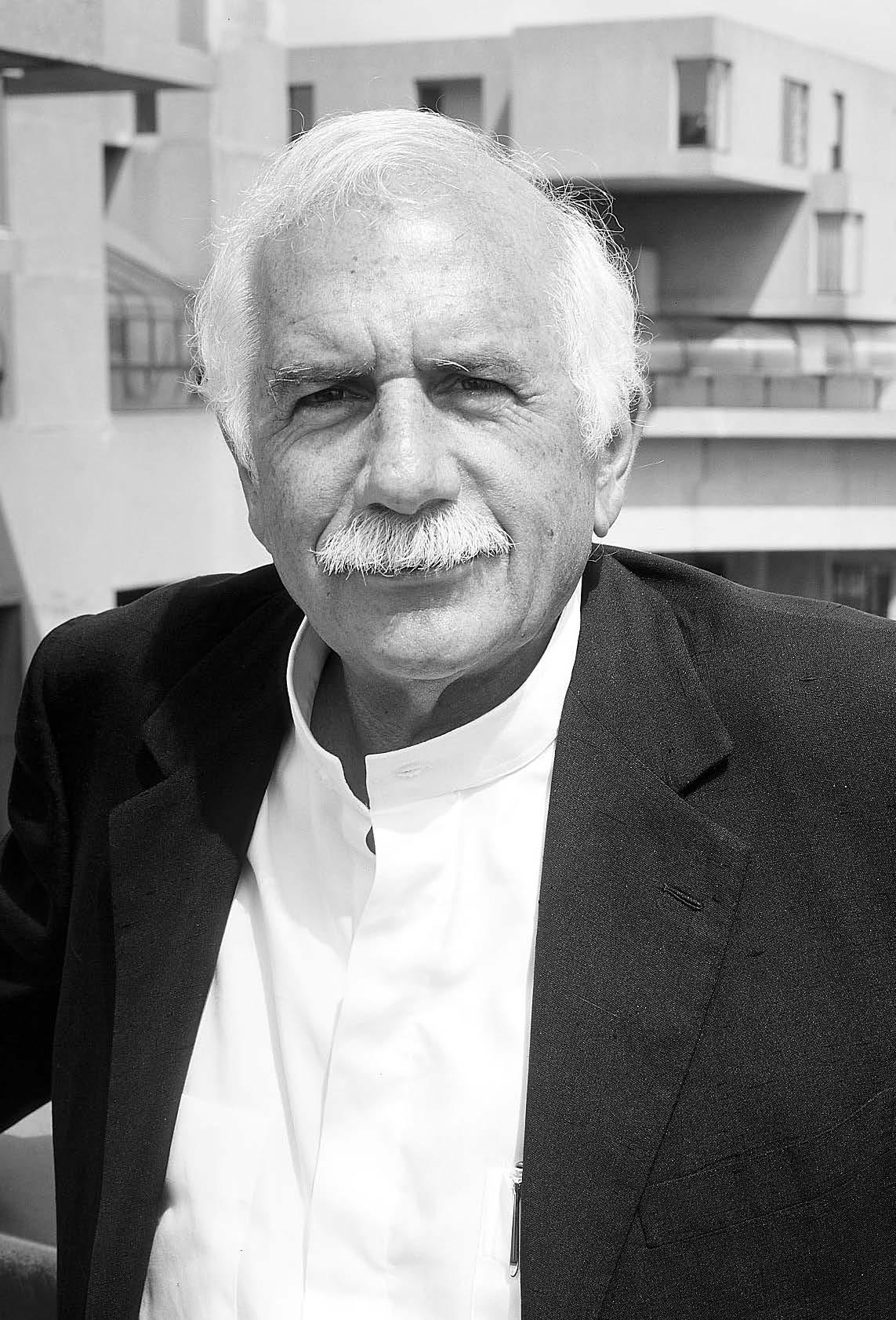
KOTOBUKI SEATING GROUP
Marina Bay Sans
Marina Bay Sans
Marina Bay Sands is an integrated resort fronting Marina Bay in Singapore. Opened in 2011 the hotel has a multitude of facilities on offer to guests. Designed to dazzle guests, the Sands Theatres have played host to the award-winning Broadway musicals such as The Lion King. The Sands Theatre and Grand Theatre seat 1,680 people and 2,155 people respectively.
The traditional proscenium style theatre offers a spectacular view and is equipped with high quality audio and visual equipment to make performances sensational.
Ferco’s in-house design team worked with renowned architects Moshe Safdie and the Marina Bay Sands to develop a seat to perfectly compliment the theatre design. The MBS is finished in acoustically friendly and aesthetically pleasing wood. The modern modular design can be combined with a concealed A3 writing tablet to create a versatile space.
Marina Bay Sands es un complejo turístico integrado frente a la bahía de Marina en Singapur. Inaugurado en 2011, el hotel cuenta con multitud de instalaciones para los huéspedes. Diseñados para deslumbrar a los huéspedes, los teatros Sands han acogido los premiados musicales de Broadway, como El Rey León. El Teatro Sands y el Gran Teatro tienen capacidad para 1.680 y 2.155 personas respectivamente.
El teatro tradicional de estilo proscenio ofrece una vista espectacular y está equipado con equipos audiovisuales de alta calidad para que las actuaciones sean sensacionales. El equipo de diseño interno de Ferco trabajó con los renombrados arquitectos Moshe Safdie y el Marina Bay Sands para desarrollar una butaca que complementara perfectamente el diseño del teatro. El MBS tiene un acabado de madera acústico y estético. El moderno diseño modular puede combinarse con una tableta de escritura A3 oculta para crear un espacio versátil.
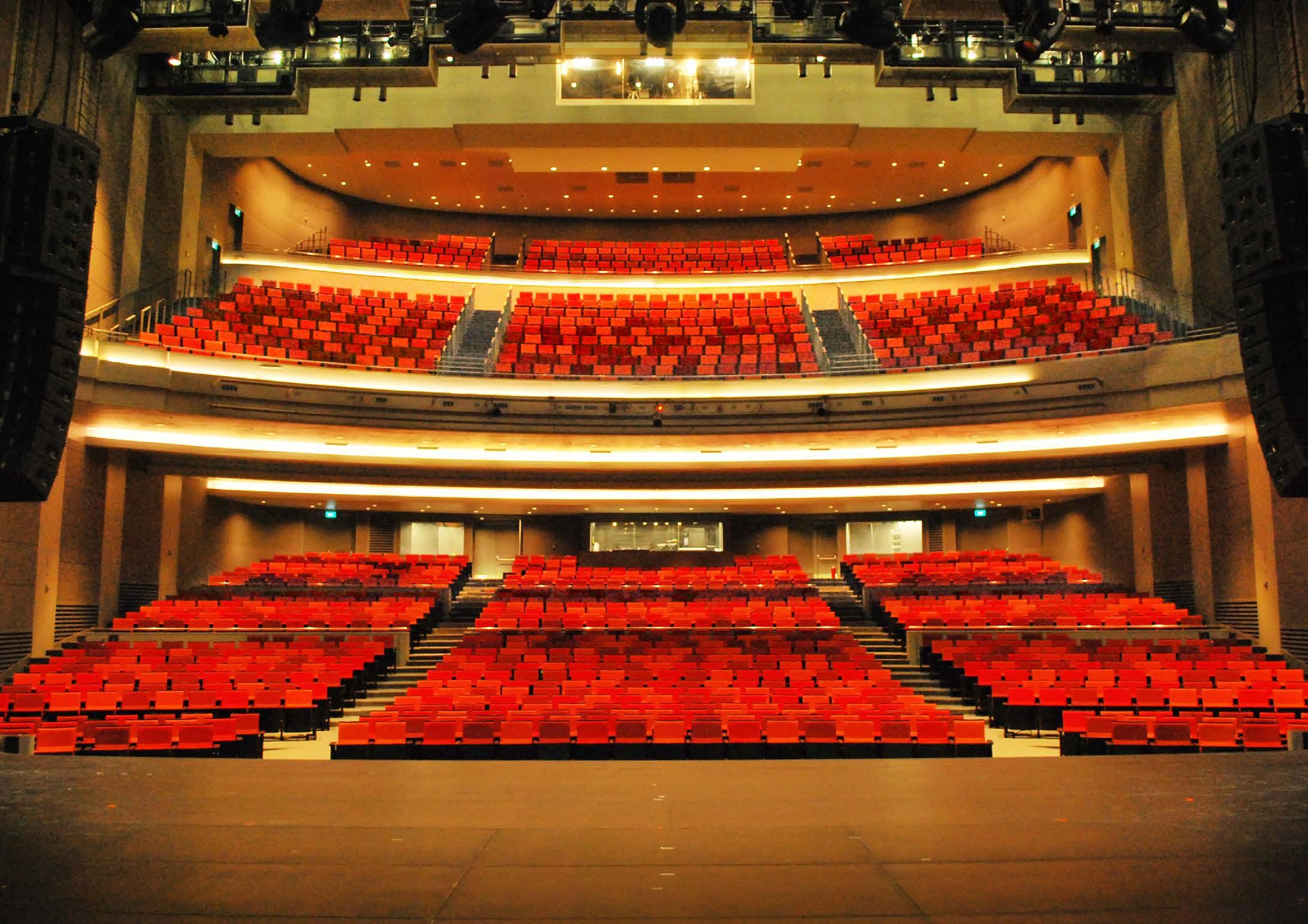

Seats:2000 Singapore
2010 /
WO OD * AT LA NT IC M BS W BWS RE MO VA BL E SE AT LE GE ND RISER MO FL OOR MO UN TE D AT LA NT IC M BS W BWS FL OOR MO UN TE 56 0m C/ C

Dominique Perrault
Haute Cour de Justice

Dominique Perrault (born 9 April 1953 in Clermont-Ferrand) is a French architect and urban planner. He became world known for the design of the French National Library, distinguished with the Silver medal for town planning in 1992 and the Mies van der Rohe Prize in 1996. In 2010 he was awarded the gold medal by the French Academy of Architecture for all his work. He was named as the 2015 Praemium Imperiale Laureate for Architecture.
Dominique Perrault (nacido el 9 de abril de 1953 en Clermont-Ferrand) es un arquitecto y urbanista francés. Se hizo mundialmente conocido por el diseño de la Biblioteca Nacional de Francia, distinguido con la Medalla de plata de urbanismo en 1992 y el Premio Mies van der Rohe en 1996. En 2010, la Academia de Arquitectura de Francia le otorgó la medalla de oro por todos sus trabajar. Fue nombrado Premio Praemium Imperiale de Arquitectura 2015.
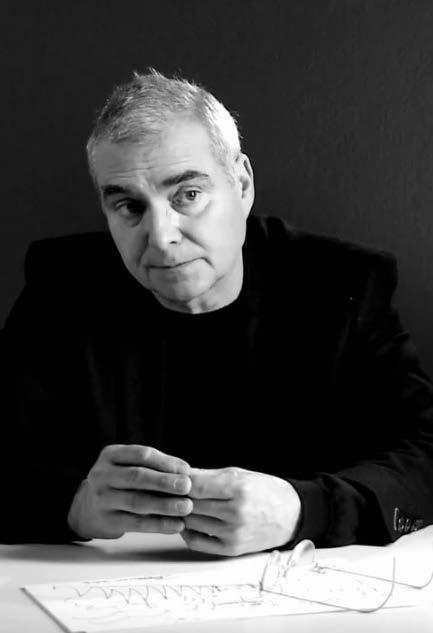
KOTOBUKI SEATING GROUP
Haute Cour de Justice
The European Court of Justice is the seat of Europe’s highest court. Dominique Perrault’s brief for its extension was threefold: to create a single complex from the existing buildings; for security reasons, to separate the public spaces inherent to the judicial activity from the private spaces; and to make it an emblematic building on the scale of the institution it represents.
The complex was restructured by arranging various simple forms around the old palace, which was dismantled and refurbished. A “ring”, set on a 10 m high colonnade, forms a peristyle around the old building. Its elevated position allows direct access to the central chambers of the public courts, which are located in the old building at the heart of the complex. The original appearance and structure have been maintained, while the interior has been remodelled. Five courtrooms on three levels are preceded by large, interconnected spaces that constitute the public chambers.
El Tribunal de Justicia de las Comunidades Europeas es la sede del más alto tribunal europeo. Para su ampliación, la misión encomendada a Dominique Perrault planteaba tres retos: crear un complejo único a partir de los edificios ya construidos; por razones de seguridad, separar los espacios públicos inherentes a la actividad judicial de los espacios privados; y convertirlo en un edificio emblemático a la escala de la institución que representa.
El conjunto se reestructuró disponiendo diversas formas sencillas en torno al antiguo palacio, que fue desmantelado y rehabilitado. Un “anillo”, situado sobre una columnata de 10 m de altura, forma un peristilo alrededor del antiguo edificio. Su posición elevada permite el acceso directo a las salas centrales de los tribunales públicos, que se encuentran en el edificio antiguo, en el corazón del complejo. El aspecto y la estructura originales se han mantenido, mientras que el interior se ha remodelado. Cinco salas de audiencia en tres niveles están precedidas por grandes espacios interconectados que constituyen las salas públicas.
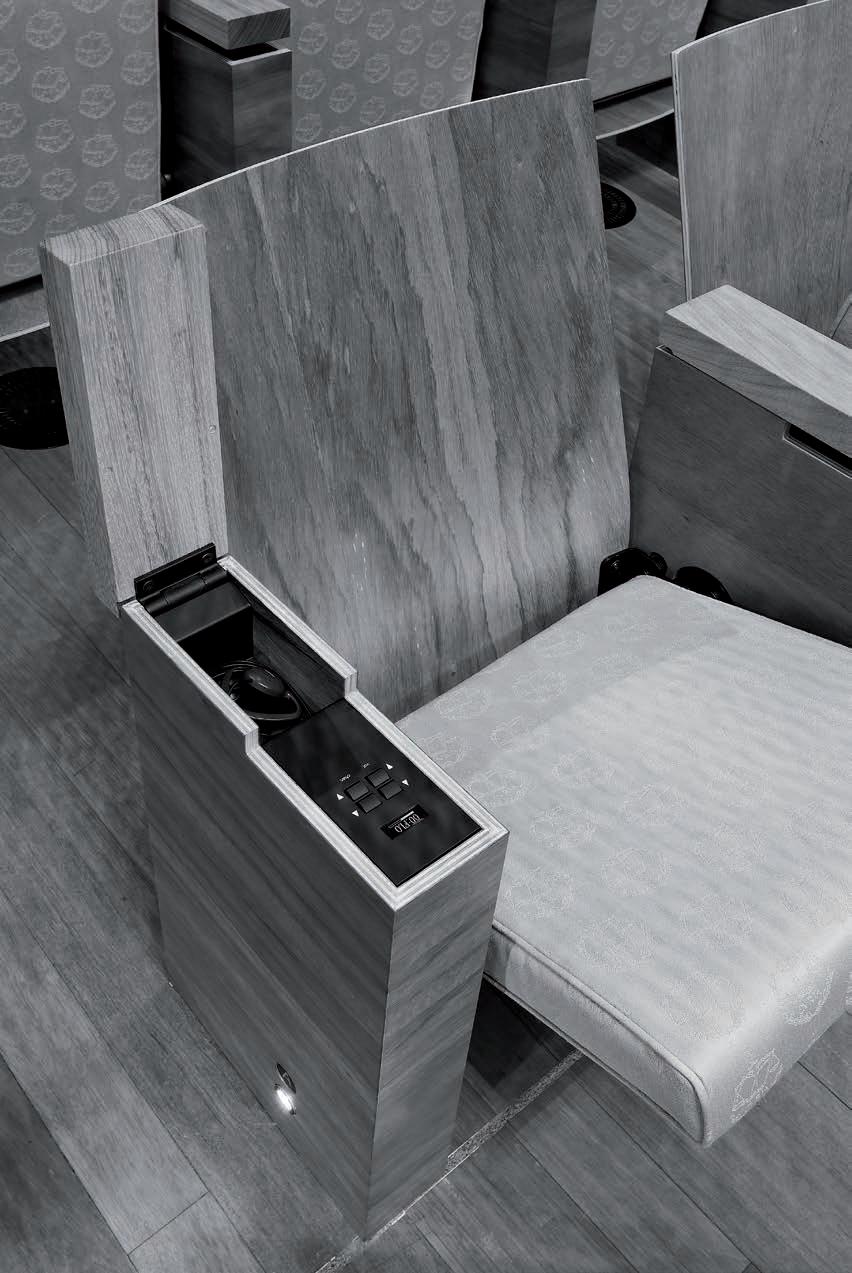
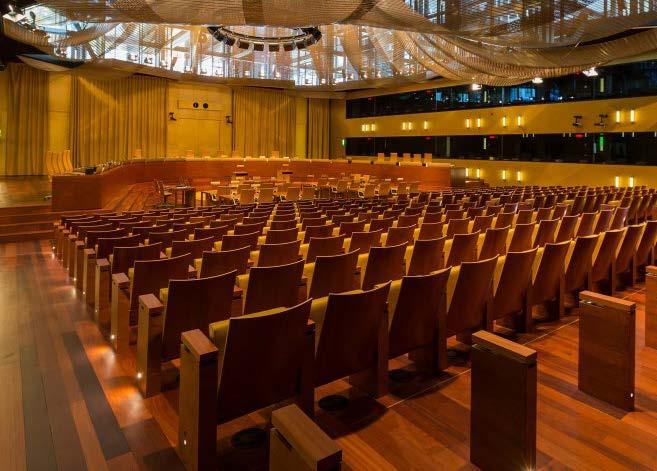
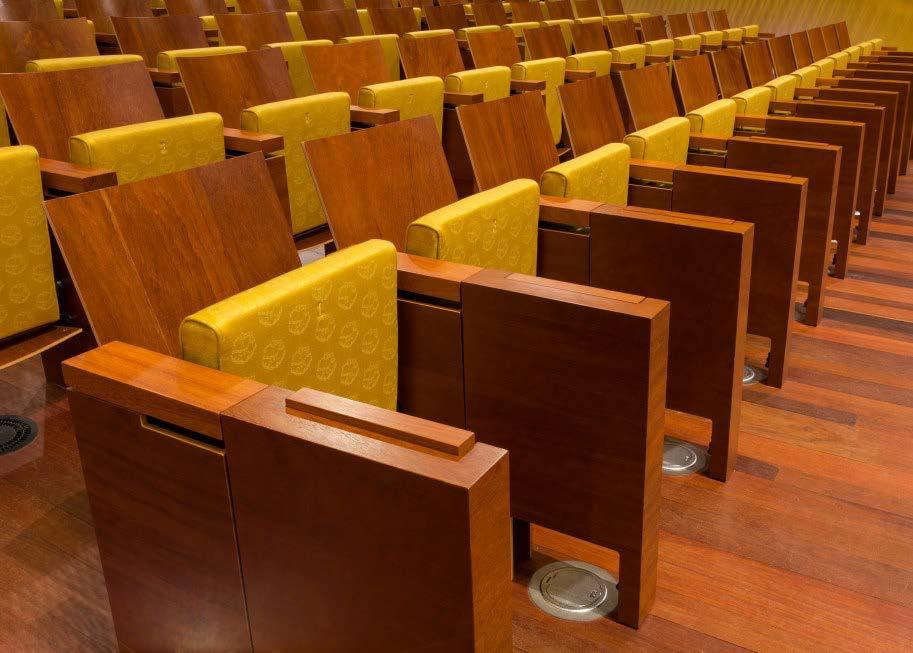
2009 Luxembourg

kotobuki-seating.co.jp
TOKYO
kotobuki-international.com
NEW YORK
kplusseating.com fercoseating.com

audience-systems.com quinette.fr
interkal.com
BARCELONA MALAYSIA LONDON PARIS USA






































































































